A quick glance through a peephole should be no one’s only line of defense. Modern front-door privacy is really a layered recipe—combine smart glazing, subtle textiles, clever hardware, strategic lighting, and even living greenery, and you block wandering eyes while still feeling welcoming and stylish. The twenty ideas below move from simple stick-on films to permanent architectural tweaks, giving renters and owners alike options that fit budgets large and small. Try one or blend several; each solution reduces sight-lines, muffles sound, or keeps visitors at a respectful distance so you can decide who gets a full view. Ready to make prying eyes a thing of the past? Let’s step through the door.
1. Frosted Window Film Turns Glass Opaque in Minutes
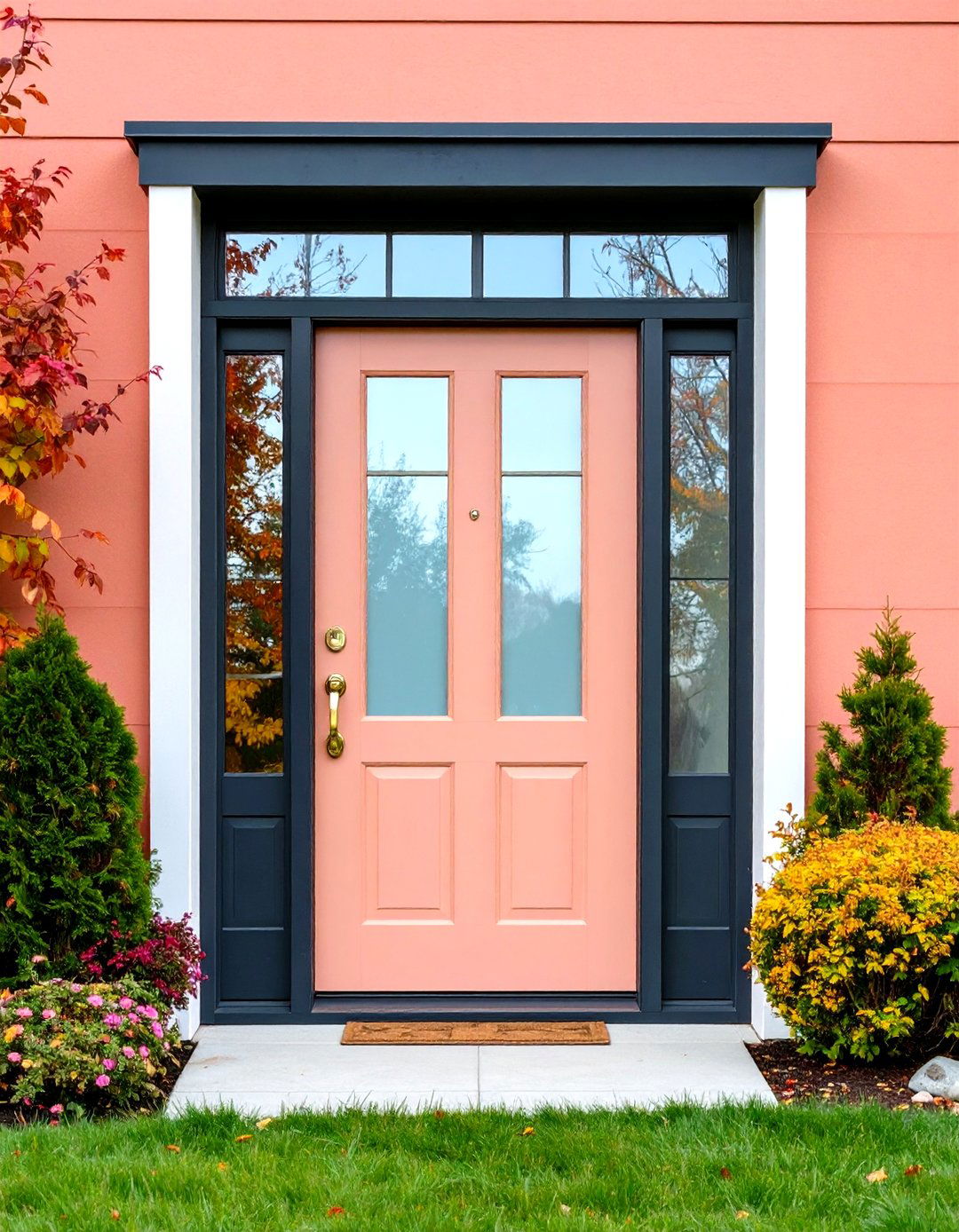
A single roll of high-quality frosted window film instantly converts clear sidelights or door lites into a blurred, light-friendly barrier, blocking direct views yet letting daylight flood the foyer. Films cling with static or low-tack adhesive, install in under an hour with just a spray bottle and squeegee, and cost a fraction of etched glass. They also filter UV, protecting rugs from fading and cutting heat gain.
2. One-Way Mirror Film Provides Daylight Privacy
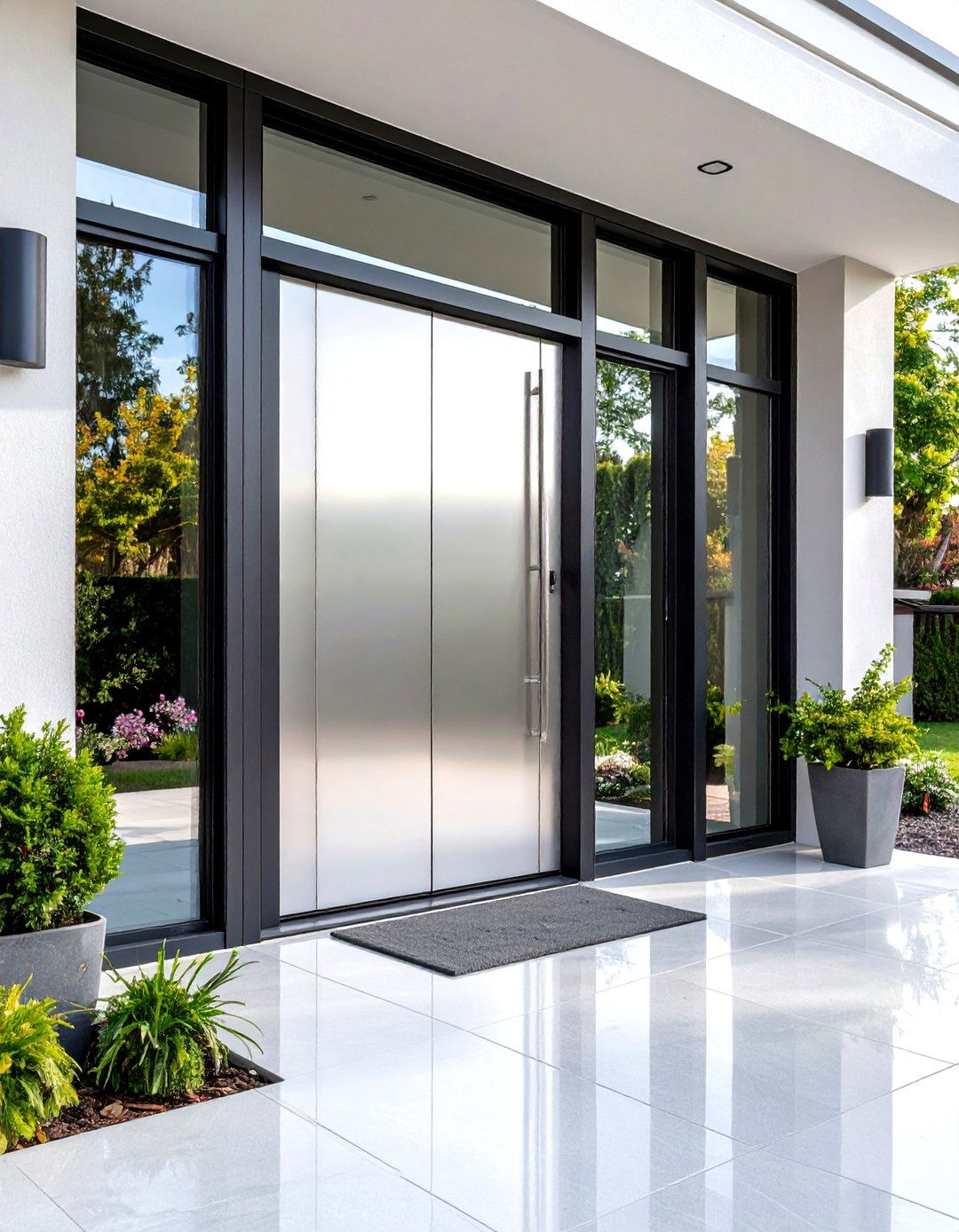
Unlike frosted film, reflective one-way film preserves your view outward during bright daylight while showing a sleek mirrored surface to passers-by. The mirrored finish also bounces solar heat, keeping the entry cooler in summer. At night, simply draw an interior shade so lights inside don’t reverse the effect. Pick a neutral silver or subtle gray to match most door colors and trim.
3. Replace Clear Inserts with Etched or Acid-Frosted Glass
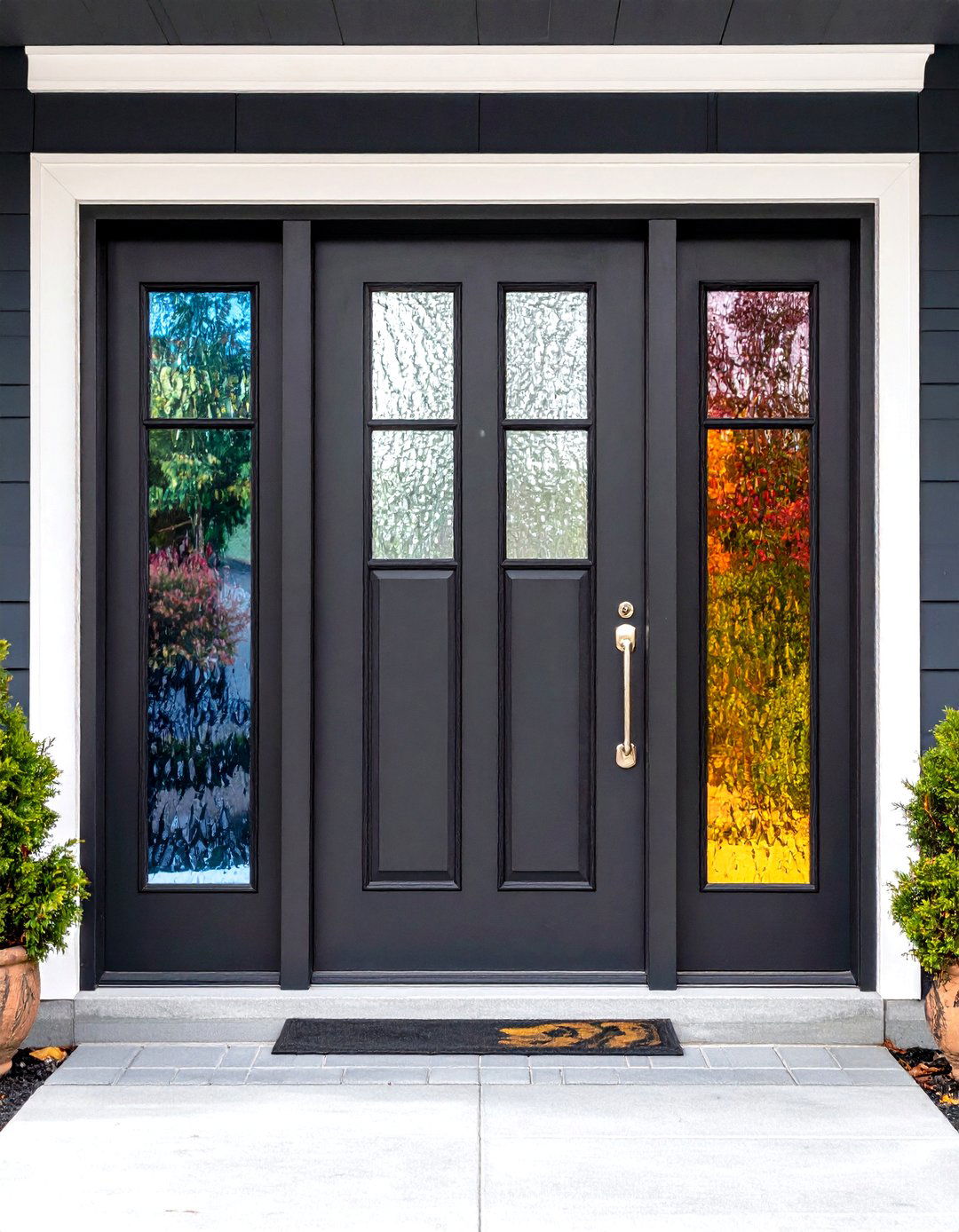
For a permanent, elegant upgrade, swap the factory clear lite with custom acid-etched or sand-blasted glass. The textured surface diffuses light, softening harsh glare and hiding silhouettes. Because the effect is integral to the glass, you can clean and repaint the door without peeling film later. Home centers and glaziers cut panels to size, and many offer patterns like rain, linen, or geometric grids for extra style without compromising privacy.
4. Café Curtains Soften Sidelights and French Doors
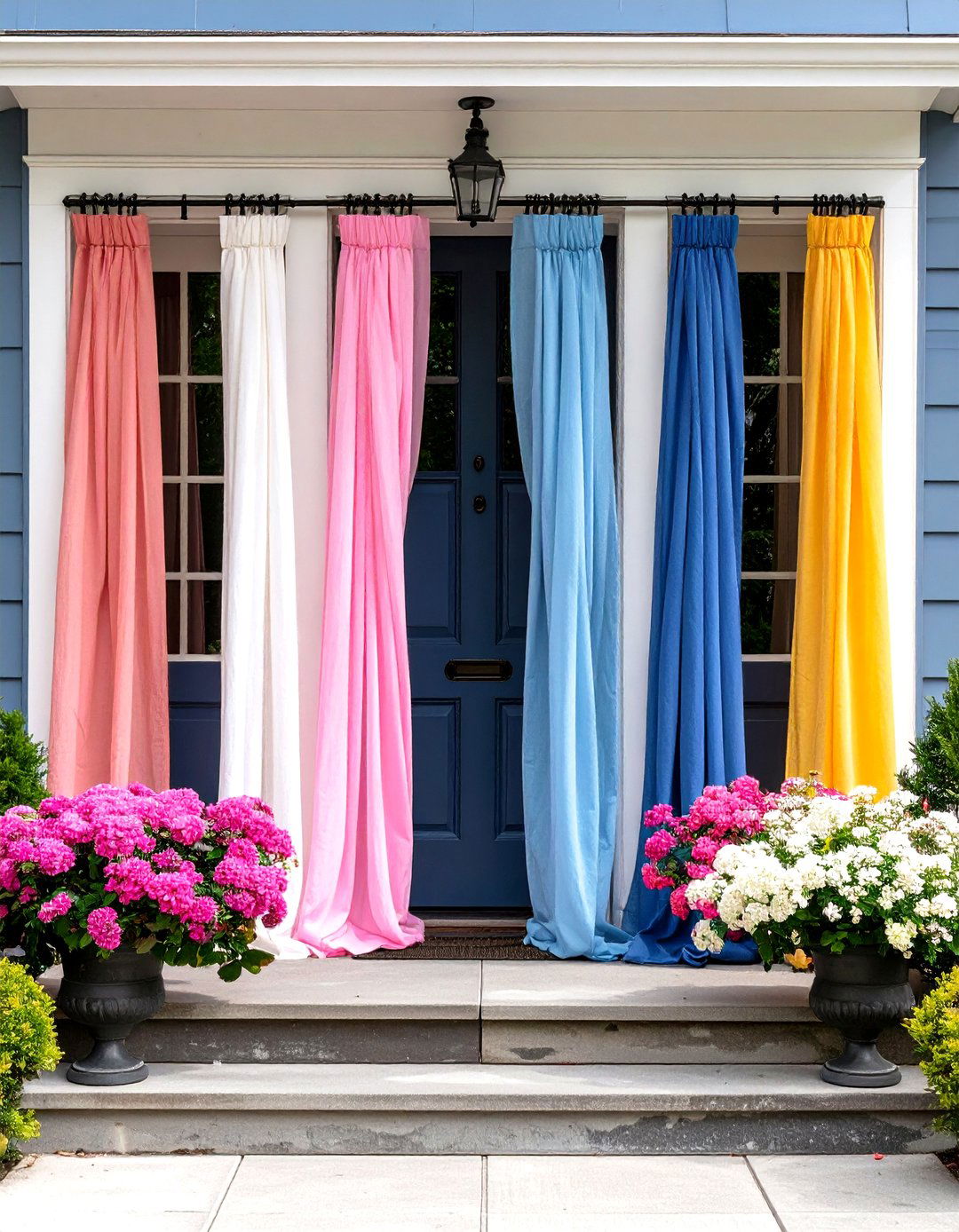
Short, rod-pocket café curtains mounted top and bottom flutter just enough for airflow yet stay flush to the glass, ideal for rentals where drilling is limited. Choose tightly woven cotton or blackout fabric if you need full coverage, or light voile for daytime glow. Because they’re easy to launder, you can seasonally switch colors to refresh curb appeal without new hardware.
5. Plantation Shutters Give Movable Control
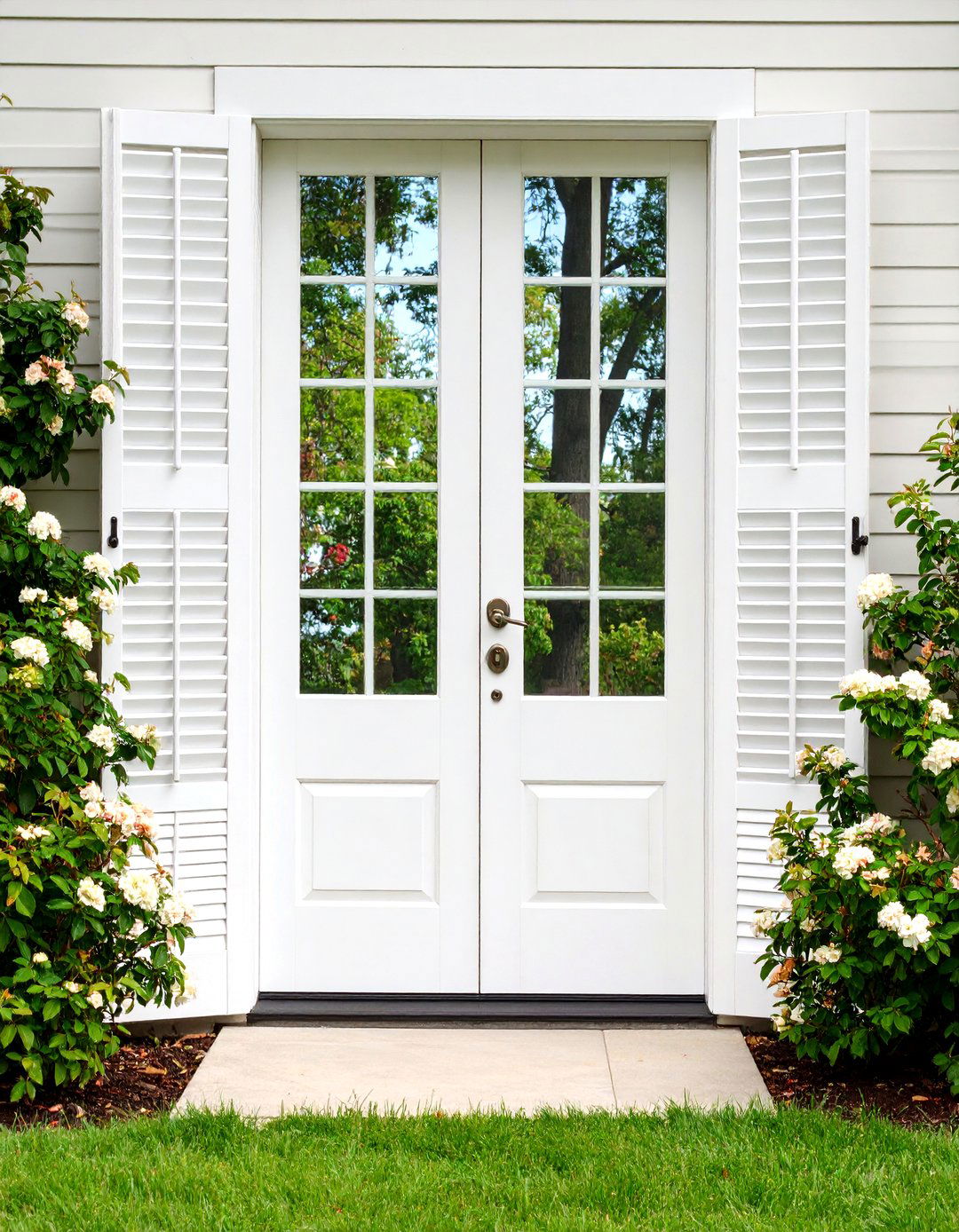
Wood or composite shutters sized for sidelights act like mini-blinds you can tilt for light while angling slats downward to block views. They insulate better than fabric, outperform blinds in durability, and often boost resale value by reading as millwork rather than add-ons. Many DIY kits install in an afternoon with only a drill and level.
6. Switchable Smart Glass Tints at a Tap
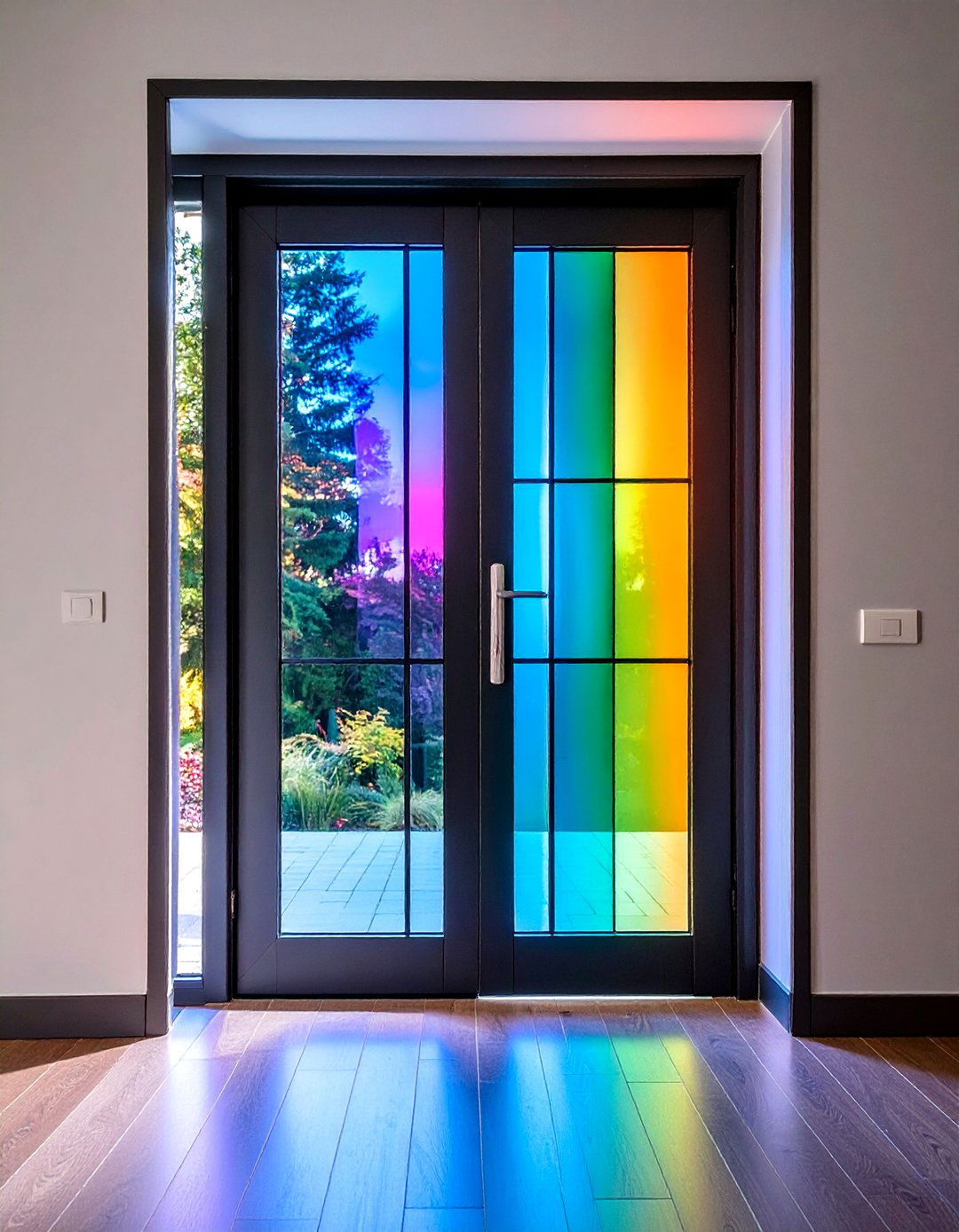
Electrochromic “smart” glass panels turn from crystal clear to frosty white in under a second when you press a wall switch or open an app, letting you greet delivery drivers openly or cloak the foyer when strangers linger. Because the film is laminated between panes, you still get thermal performance plus wow-factor tech. Though pricier than static alternatives, it’s unbeatable for flexibility and minimal visual clutter.
7. Stainless-Steel Security Screens Add Two-Way Privacy
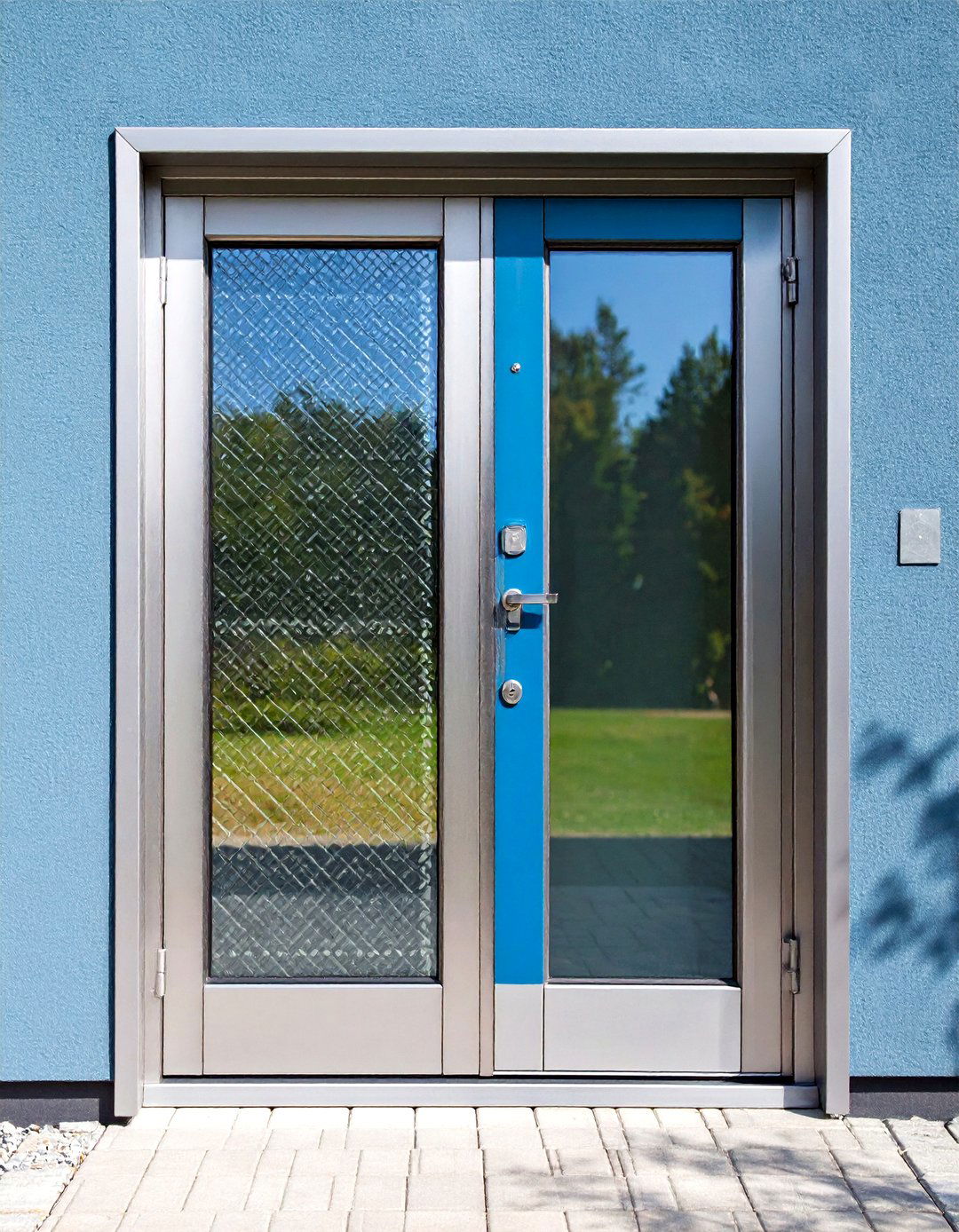
A security screen door fitted with fine stainless mesh looks airy from inside yet appears almost opaque from the sidewalk, acting like a stiff fabric scrim. The woven steel foils cutting tools better than aluminum, resists rust, and doubles as insect screening. Add a three-point lock and you can safely open the main door for fresh air without sacrificing privacy.
8. A Slim Pergola or Awning Filters Sight-Lines
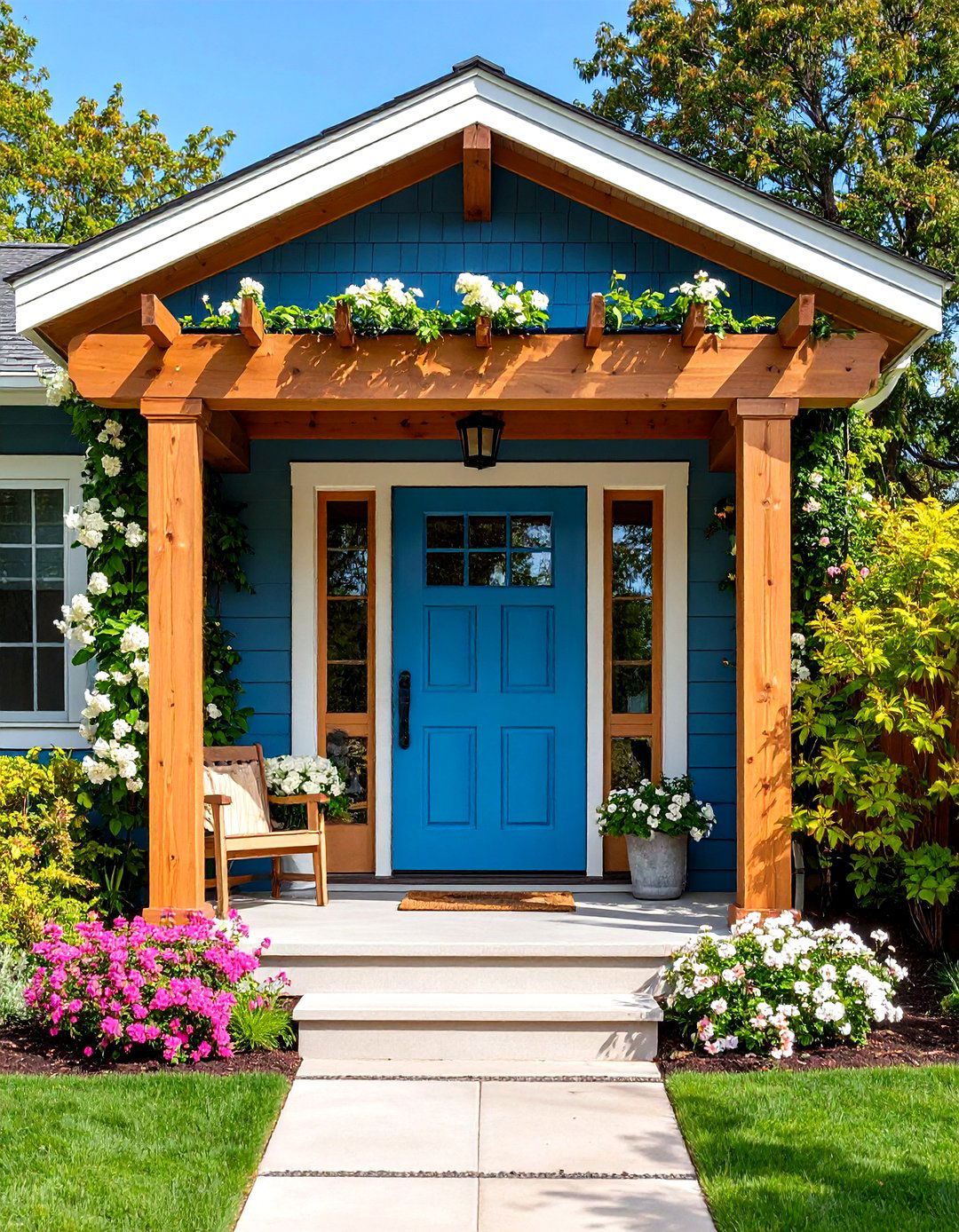
Mounting a shallow pergola over the threshold forces approaching guests to step closer before they can peer inside, while cedar slats or shade cloth break direct sight-lines from the street. Paint or stain it to match trim, then train climbing jasmine or roses along the rafters for fragrant, living camouflage that still allows breezes.
9. Flank the Door with Tall Planters for Natural Screening
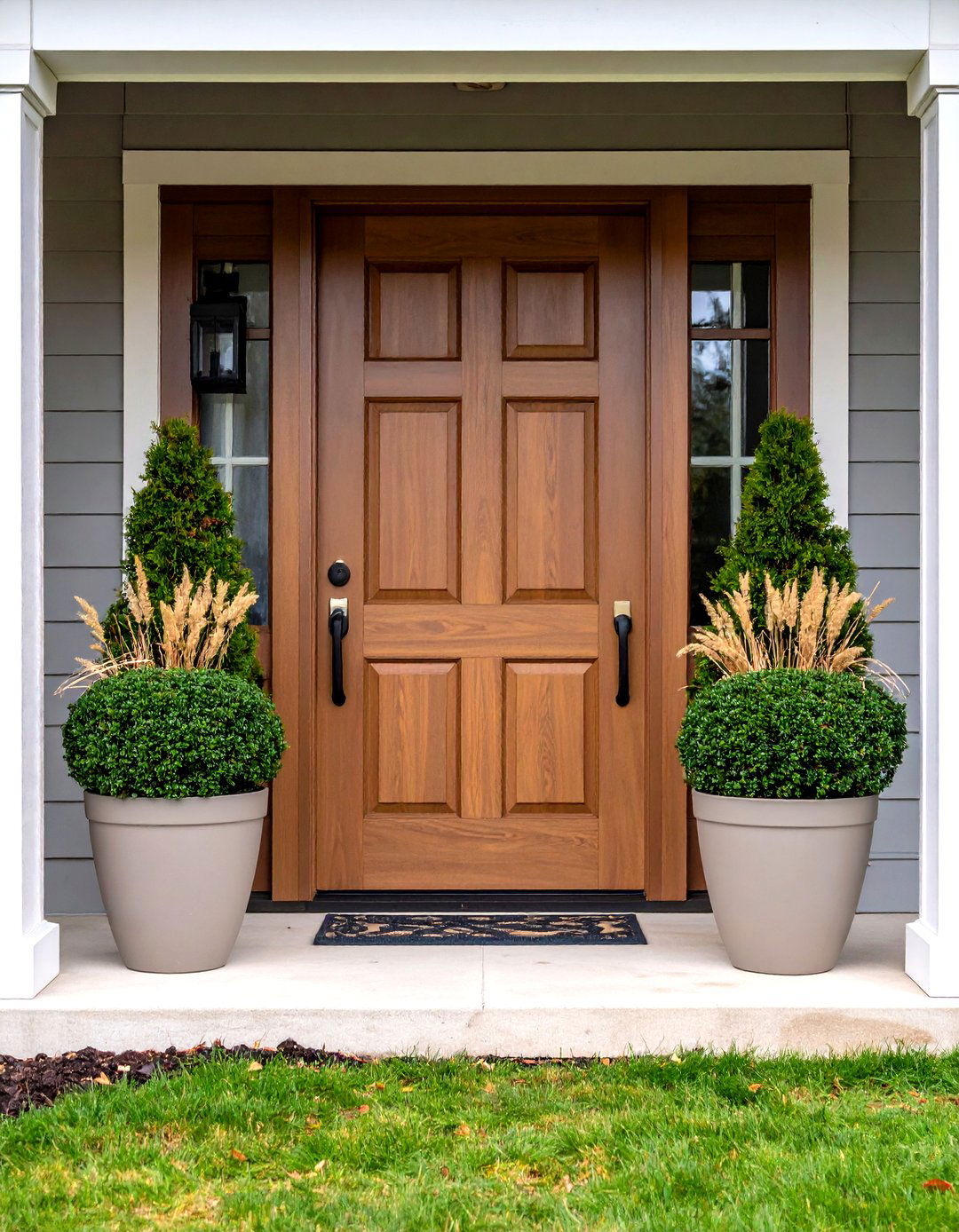
Waist-high planters filled with evergreen boxwood, graceful grasses, or seasonal blooms create a soft green barrier that hides lower glass panes and discourages prowlers from pressing against the door. Matching pots on both sides frame the entry like columns and add instant curb appeal. Wheels or lightweight resin make them easy to move for cleaning.
10. Louvered Privacy Panels Shield Side Angles
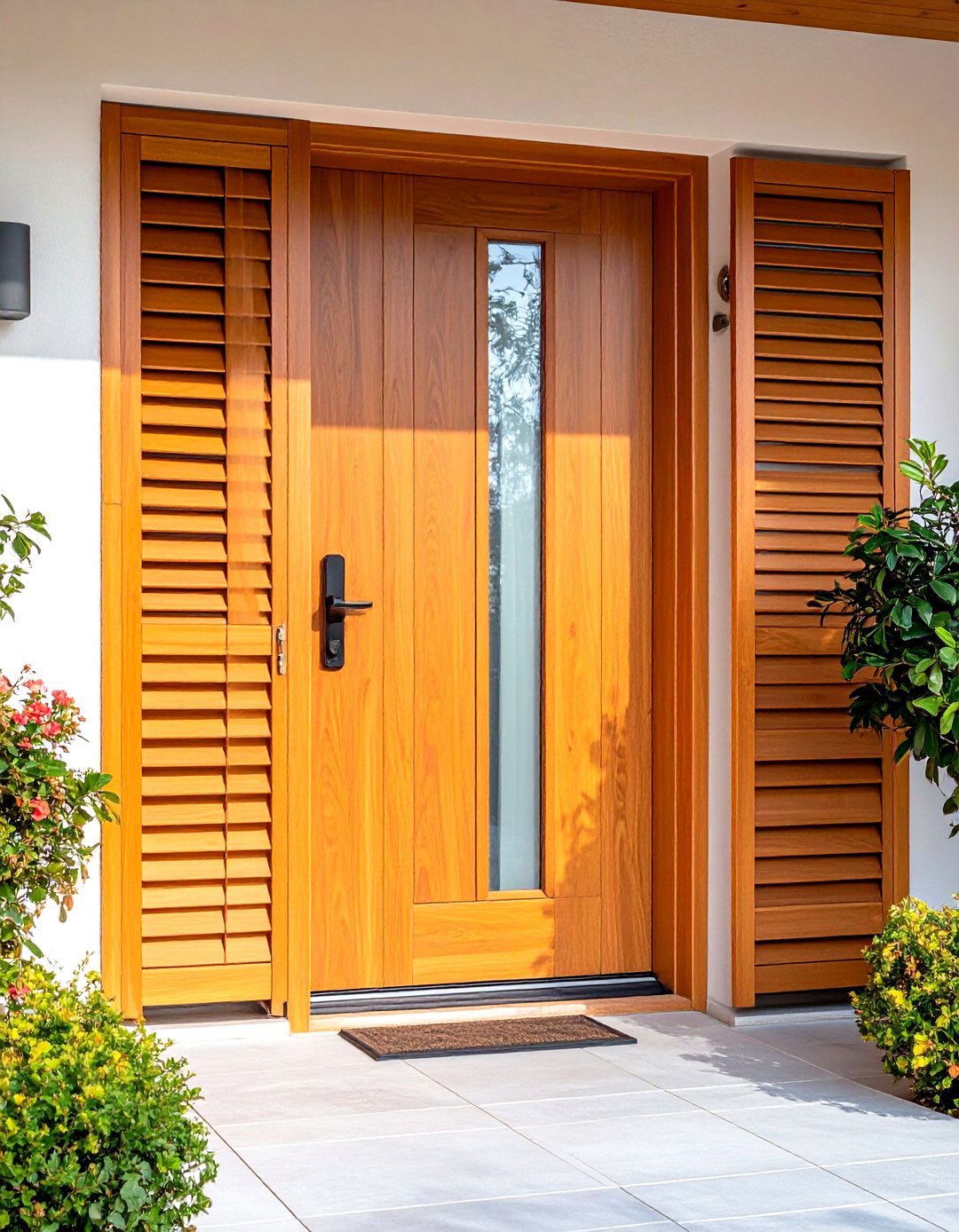
Free-standing or wall-mounted louver screens, often sold in modular kits, sit parallel to the door or at a slight 45-degree angle, blocking glances from neighbors’ driveways while letting light and air pass. Paint them to blend with siding or stain for a garden feel. Hinged versions fold back flat on greeting days and extend when solitude is preferred.
11. Build an Enclosed Vestibule for a Double-Door Buffer
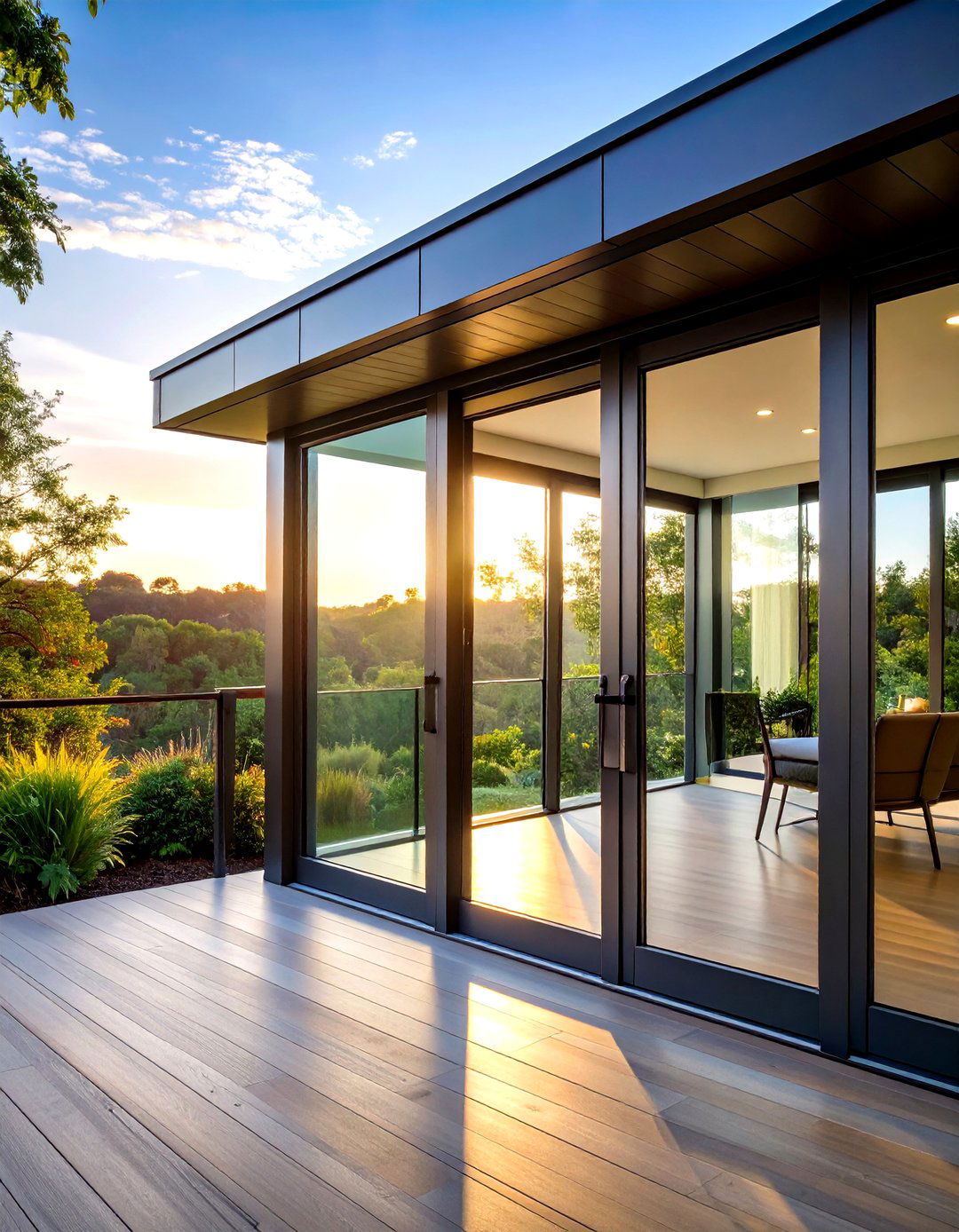
Adding a small glass-walled vestibule or storm porch creates a second threshold, so visitors ring one bell while you remain behind another door. The extra airlock reduces drafts and noise, and when paired with access-control hardware it dramatically cuts tailgating or forced entry. Even a prefab aluminum kit can be assembled over a weekend.
12. Smart Video Doorbells Put Eyes Outside, Not In
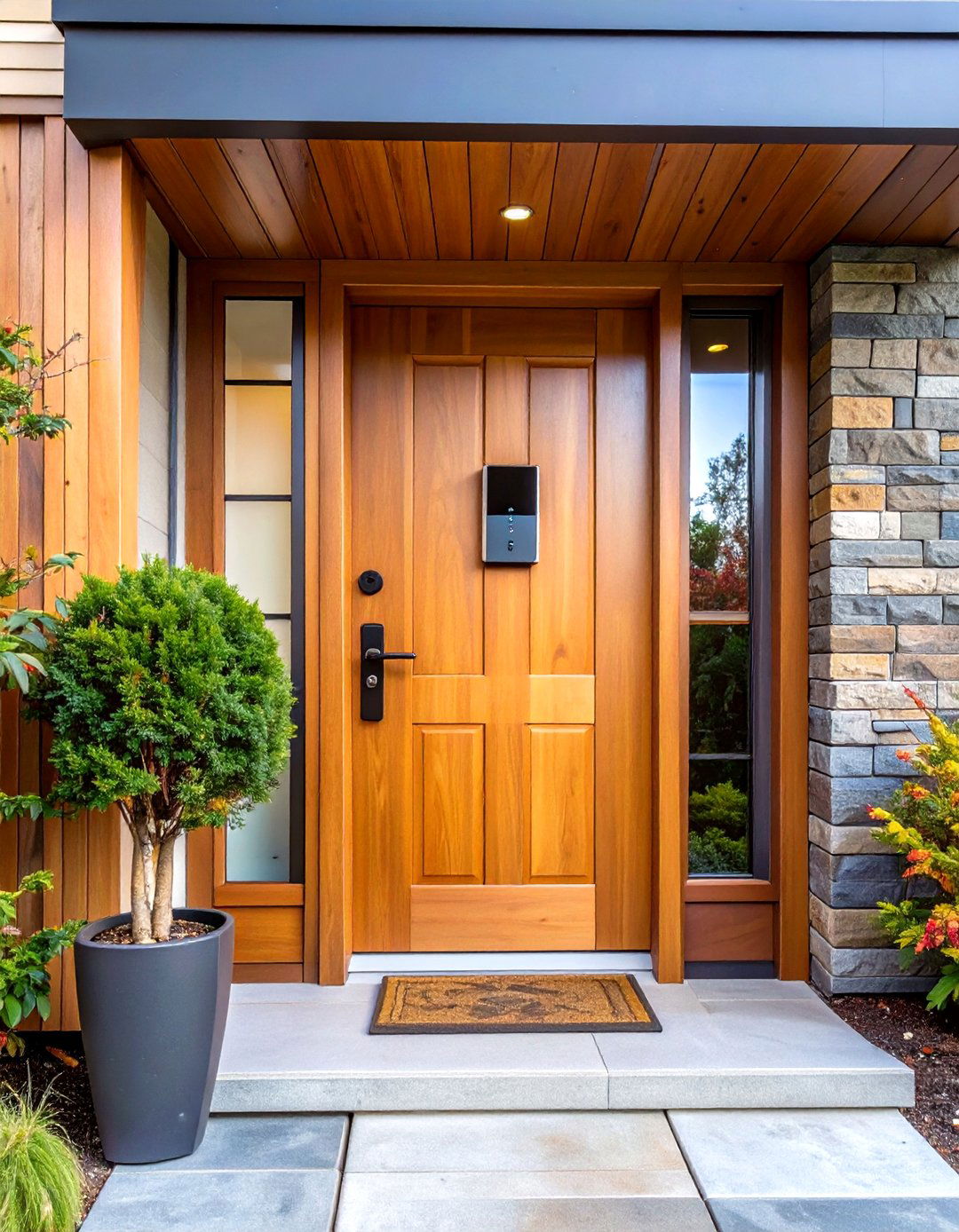
A camera-equipped doorbell lets you identify visitors from your sofa and stores footage that discourages snooping. Newer models integrate directly into smart locks, merging keyless entry with live video so you never have to crack the door to talk through a chain. Many porch pirates admit they avoid homes with visible cams, making this privacy layer a theft deterrent too.
13. Speakeasy Grilles Offer Peek-Through Privacy
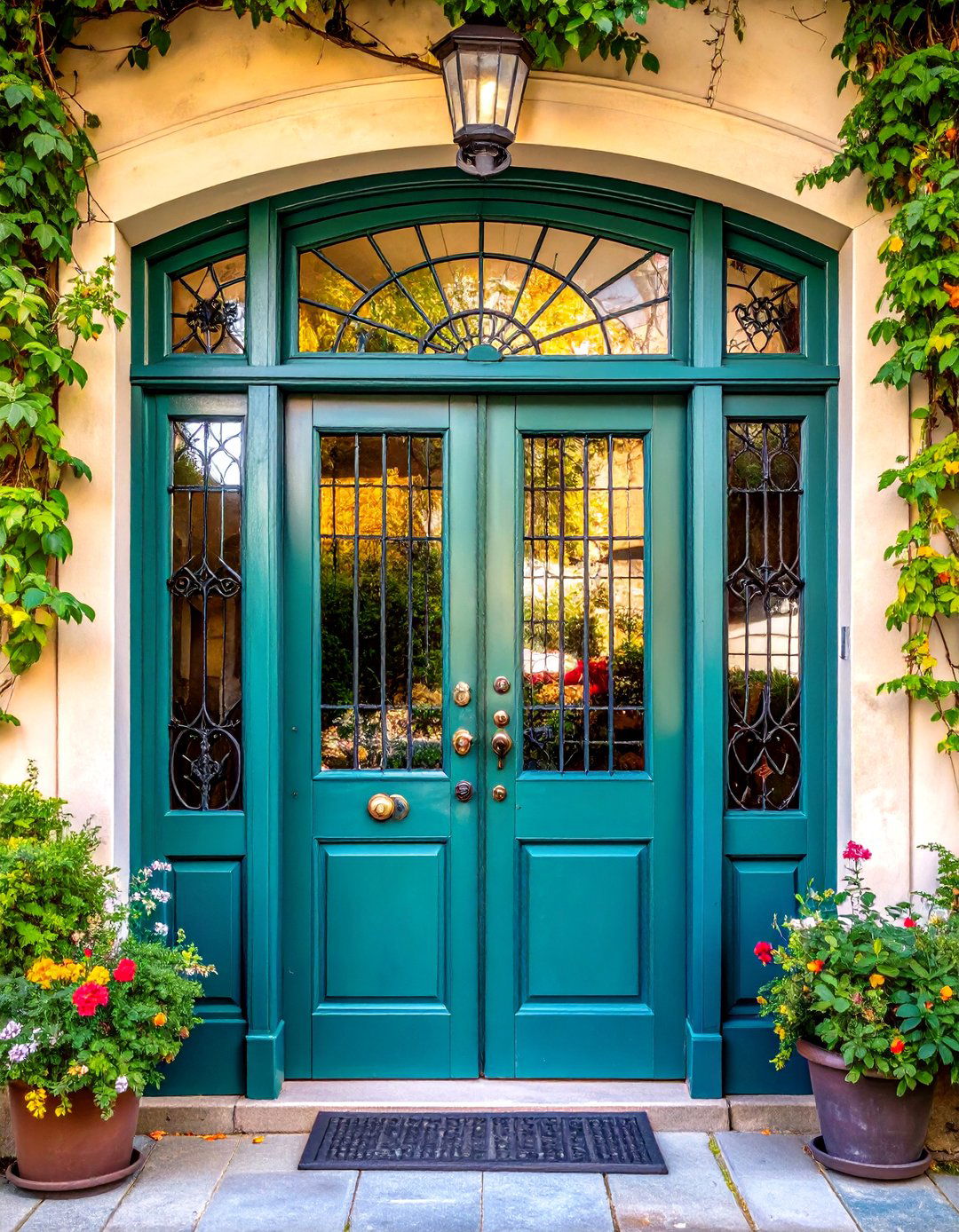
Inspired by Prohibition-era doors, a small hinged “speakeasy” grate lets you open a palm-sized hatch to check IDs while the main slab stays shut. Iron grilles complement rustic or Spanish styles and mount into a simple jigsaw-cut hole; modern versions come with tempered glass inserts for insulation. Because only your eyes appear, you preserve anonymity until you decide to swing wide.
14. Two-Way Audio Intercom Ends Door-Cracking
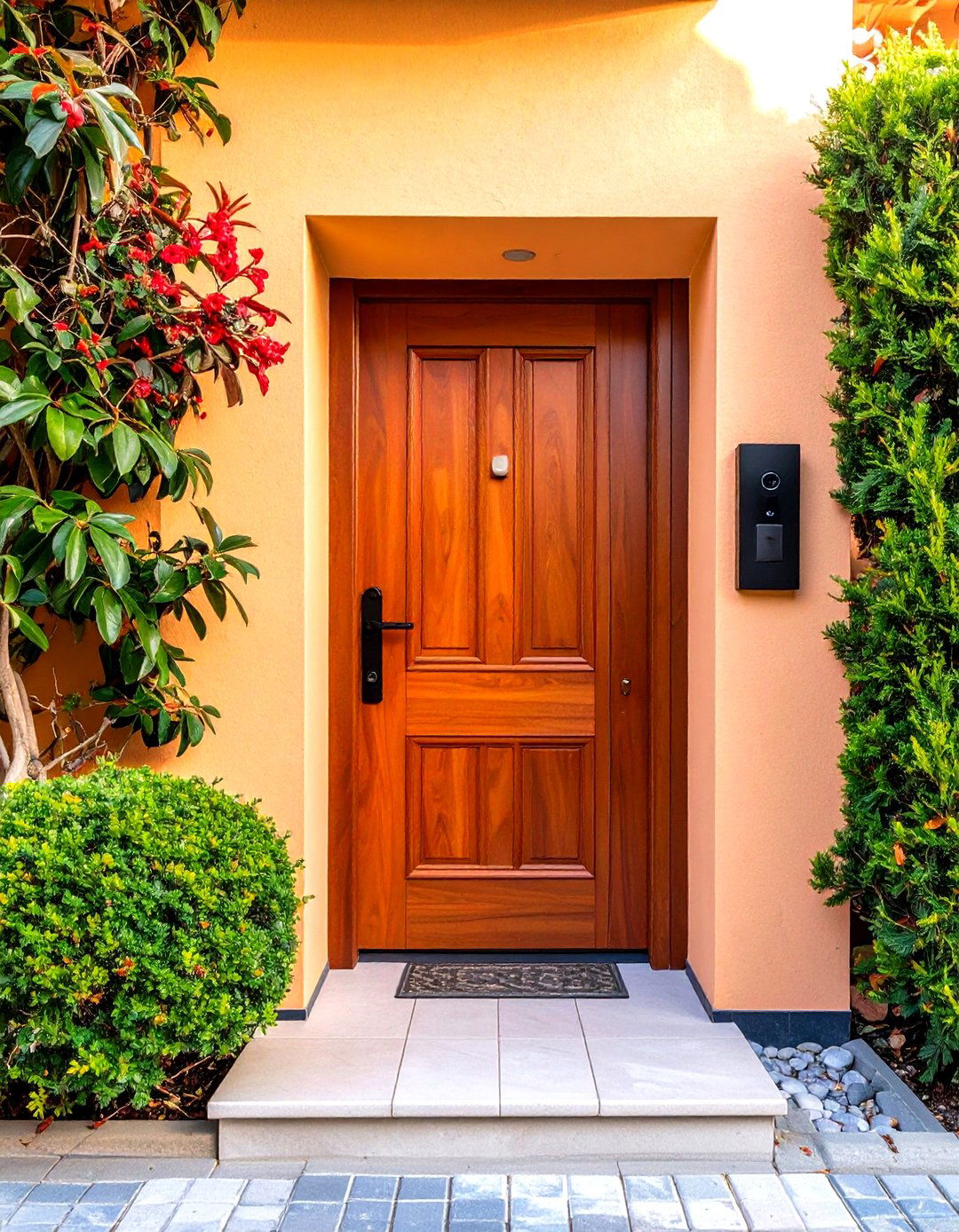
If camera installation isn’t practical, a wired or wireless intercom allows clear conversation through the door, sparing you from opening even a peephole. Some kits pair with existing chimes, others run on rechargeable batteries—no electrician required. Look for units with noise cancellation so voices stay crisp over street traffic.
15. Digital Peephole Viewers Broaden Your Field
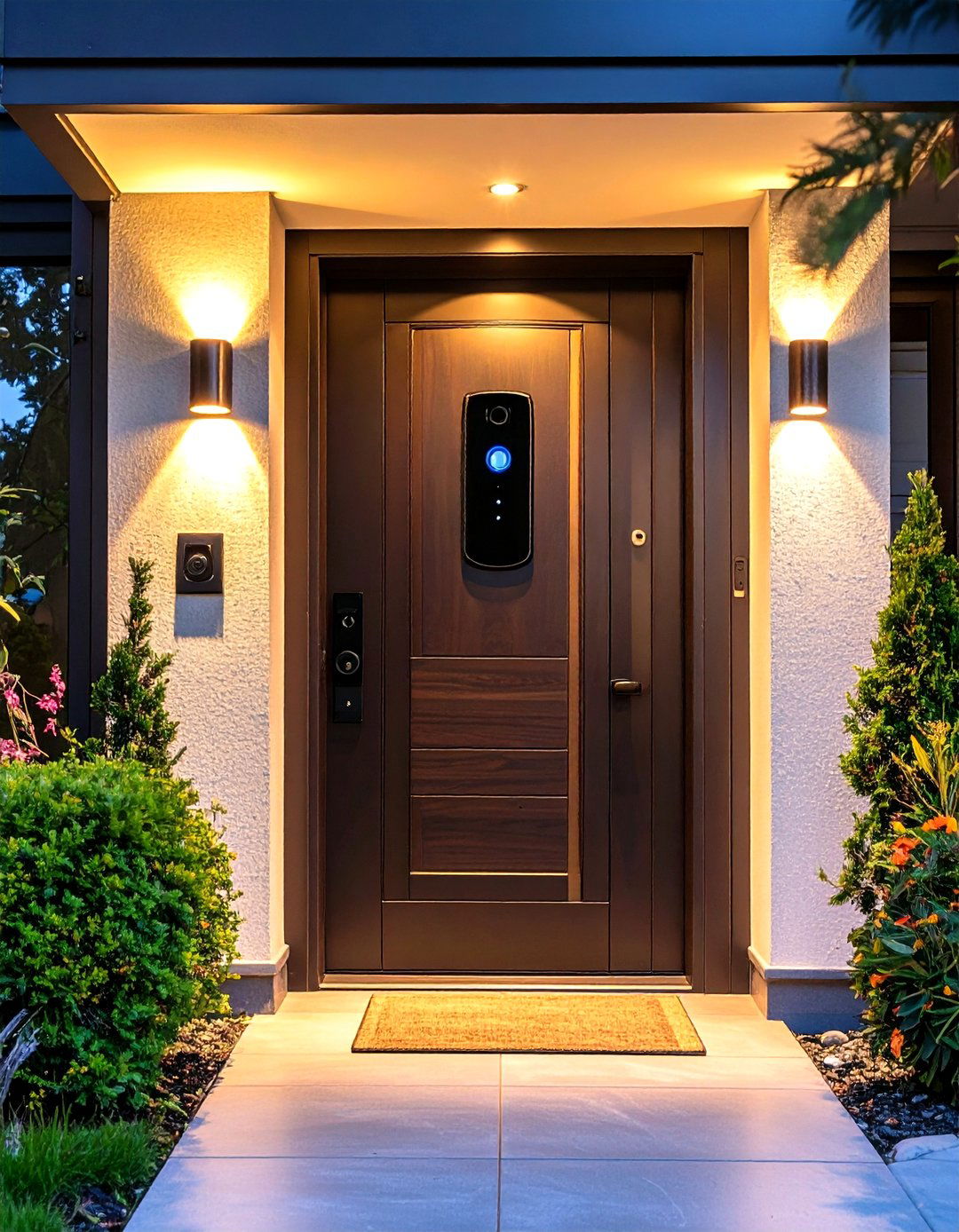
Traditional peepholes distort vision and demand you press your face to the door. A battery-powered digital viewer replaces the lens with a mini screen that shows full-color, wide-angle views, often with night vision LEDs. Because the screen faces inside, passers-by cannot tell when you’re looking out, preserving your privacy as well as safety.
16. Anti-Fishing Letterbox Cages Protect the Slot
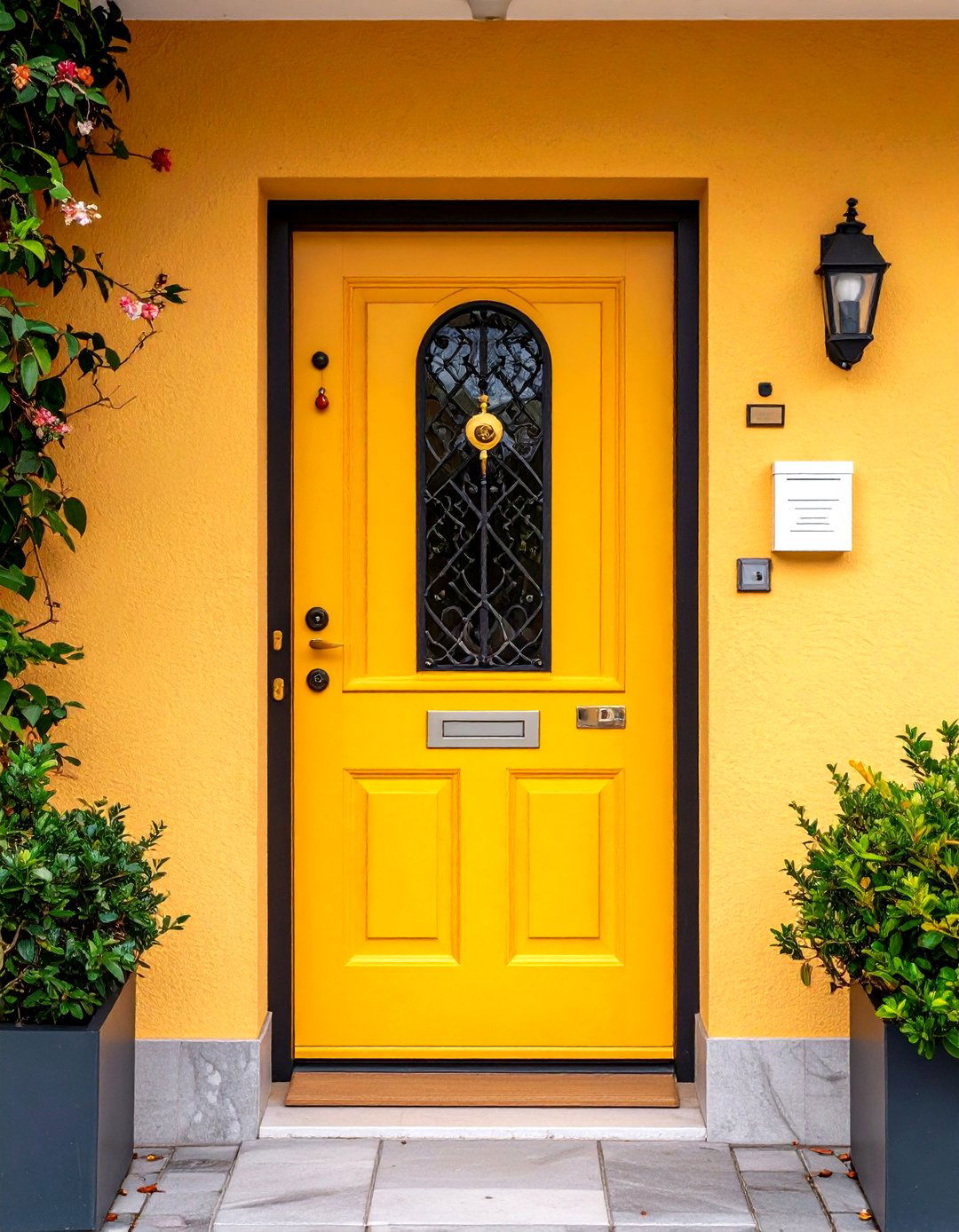
If your door has a mail slot, thieves can “fish” through it with rods to grab keys or peek into your hallway. An internal wire cage or locking box catches letters and blocks intrusive tools. Choose powder-coated steel for durability, and position it so the slot flap still closes freely.
17. Motion-Activated Lighting Scares Off Lurkers
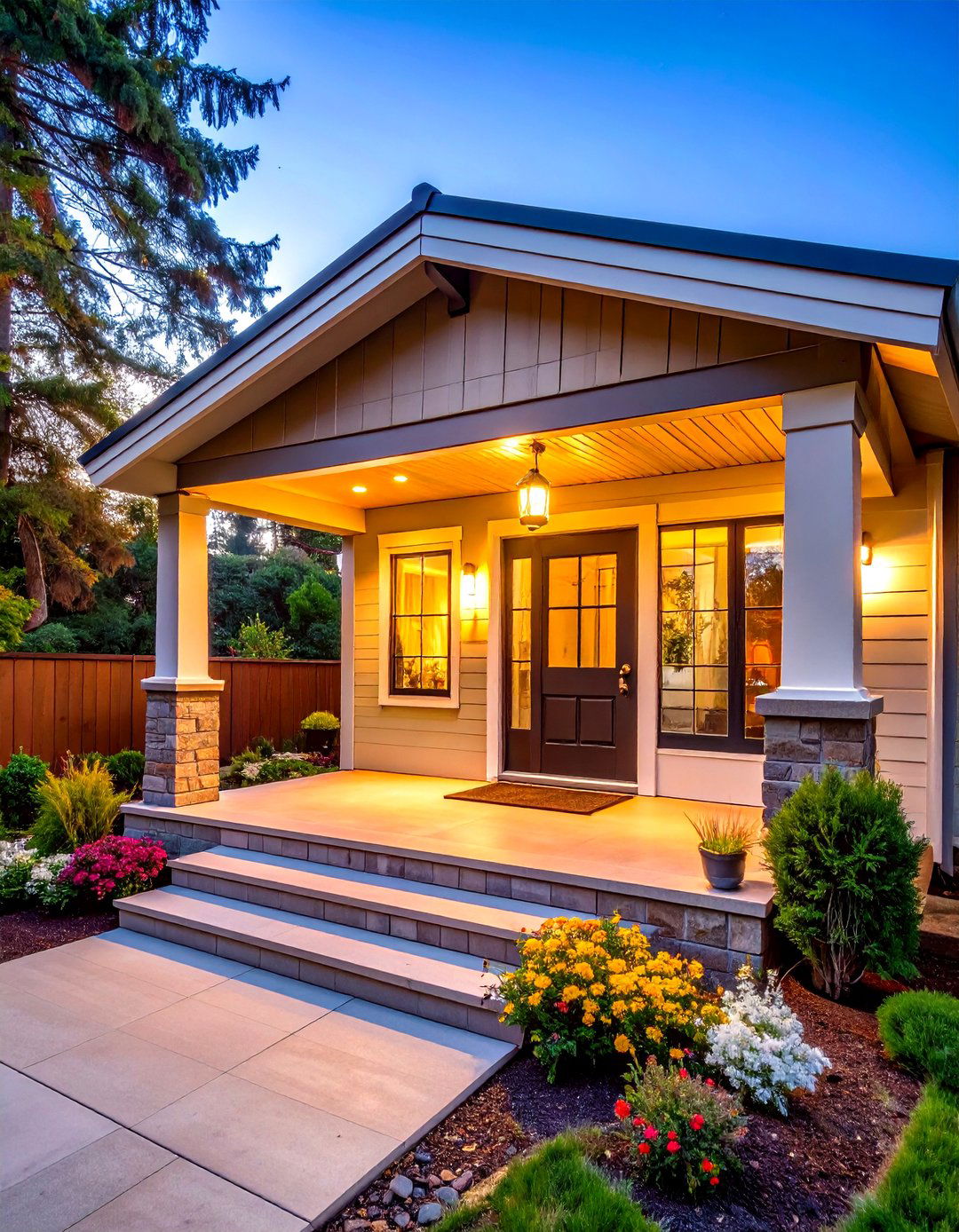
Bright, sensor-triggered LED fixtures over the porch expose anyone lingering too long, discouraging window-pressers while saving energy when nobody’s around. Studies and security-industry guidance note burglars prefer houses where they can stay hidden in the dark, so pairing light with cameras multiplies the effect. Ensure fixtures mount high enough to avoid tampering.
18. Multipoint Locks Seal Gaps and Sight-Lines
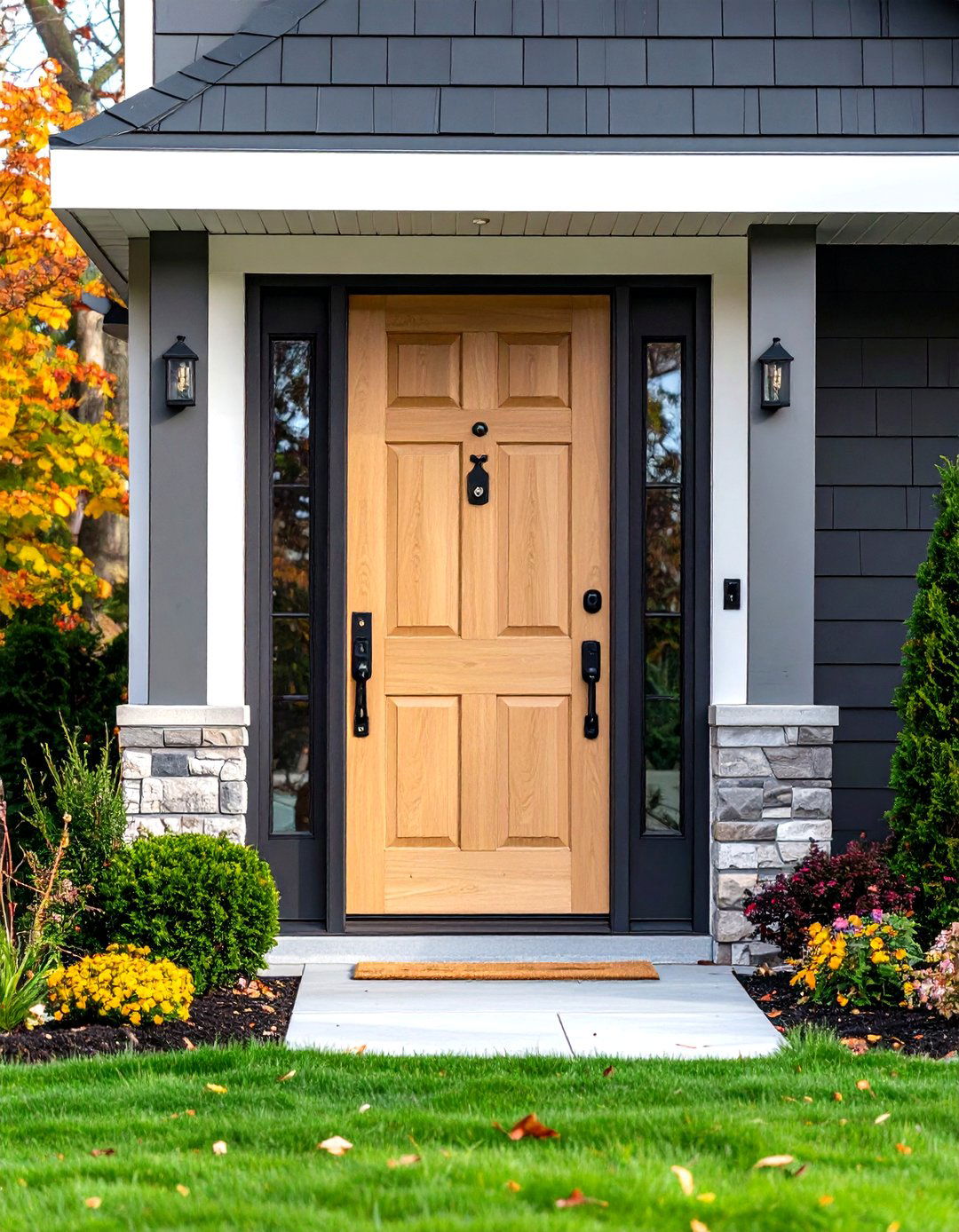
Beyond security, multipoint locks pull the door evenly against weather-stripping along the jamb, eliminating tiny gaps people could peer through and boosting acoustic privacy. Models with hook-bolts at top, middle, and bottom resist prying attacks far better than a single deadbolt, and many retrofit into existing slabs with a template kit.
19. Move House Numbers Away from the Door’s Center
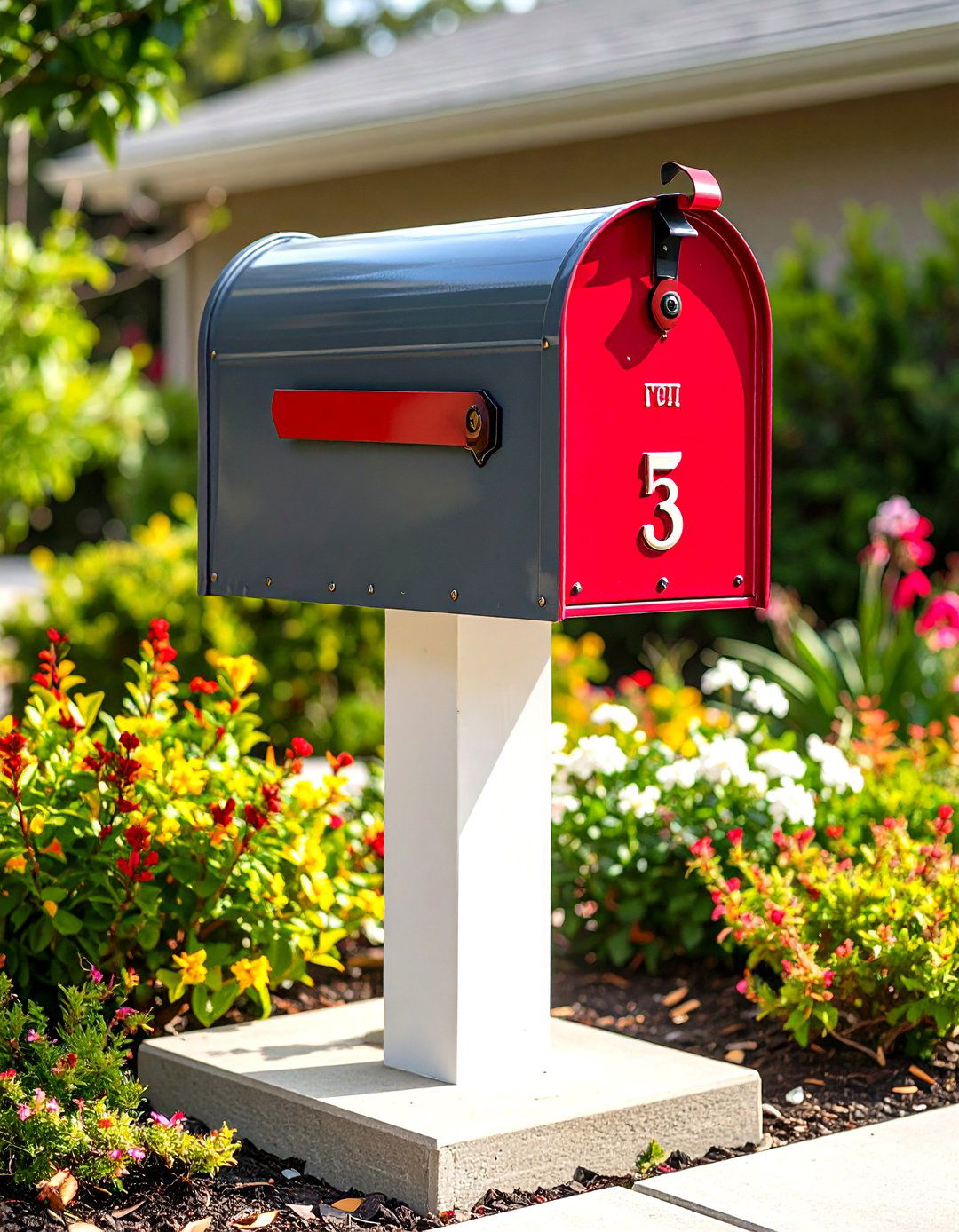
Large, eye-level numbers draw outsiders’ gaze directly to the glass. Mount them instead on a gate post, curbside mailbox, or a low planter so emergency crews can still find you while casual walkers can’t see straight into the foyer. Reflective, contrasting digits remain legible at night when lit from below.
20. Layer Landscaping for a Soft Privacy Buffer

Finally, frame the walkway with staggered heights: tall evergreens at the back, mid-sized flowering shrubs midway, and annuals upfront. This “stepped” planting plan blocks the lowest panes first and keeps upper glass visible for light. Climbing vines on trellises beside the door can also obscure sidelights without shading interior rooms.
Conclusion:
Combining even two or three of these front-door privacy tactics creates exponential protection—think frosted film for the glass, a smart video doorbell for awareness, and motion lights for deterrence. The result is an entry that greets wanted guests yet keeps every glance, knock, or package drop comfortably on your terms.


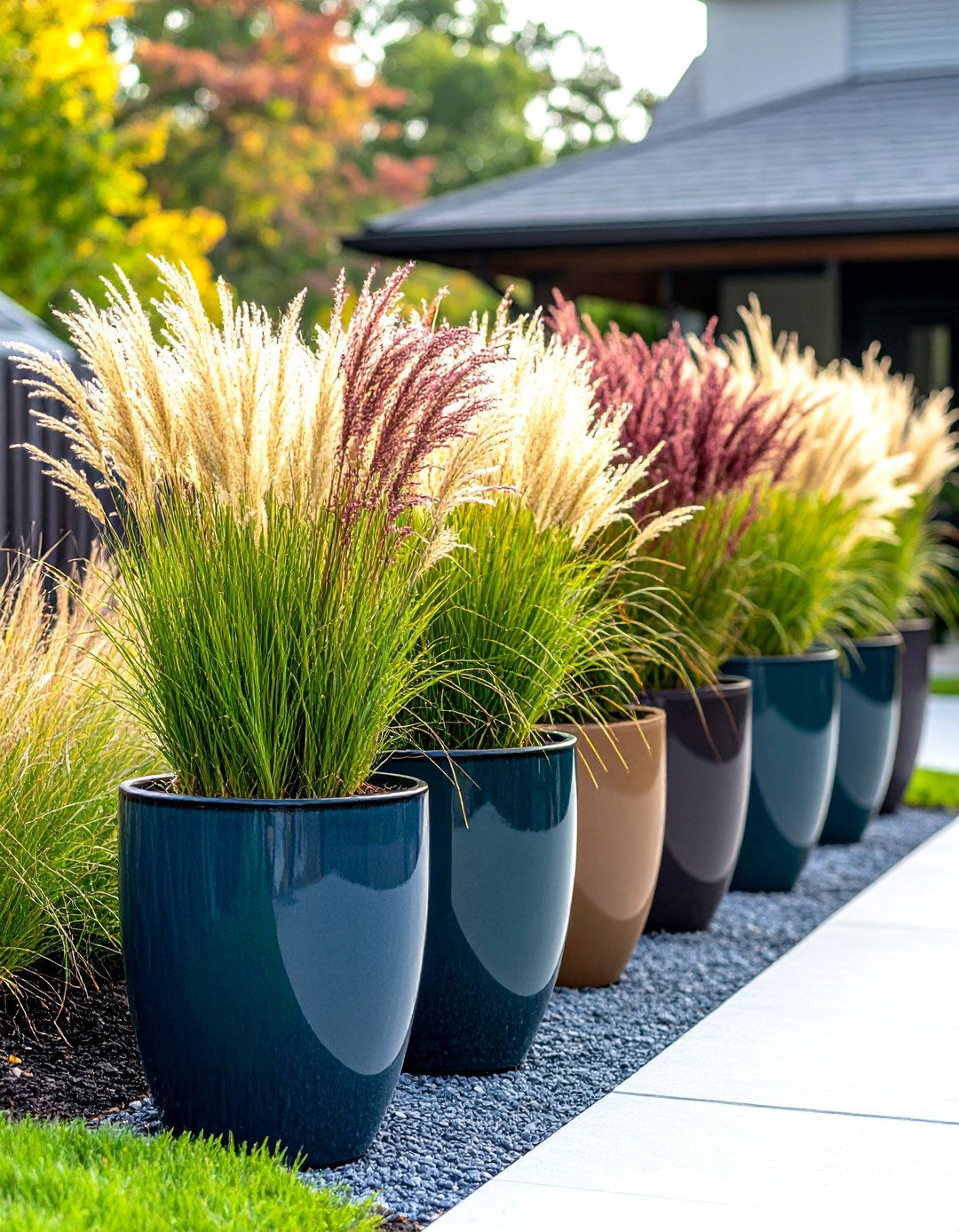
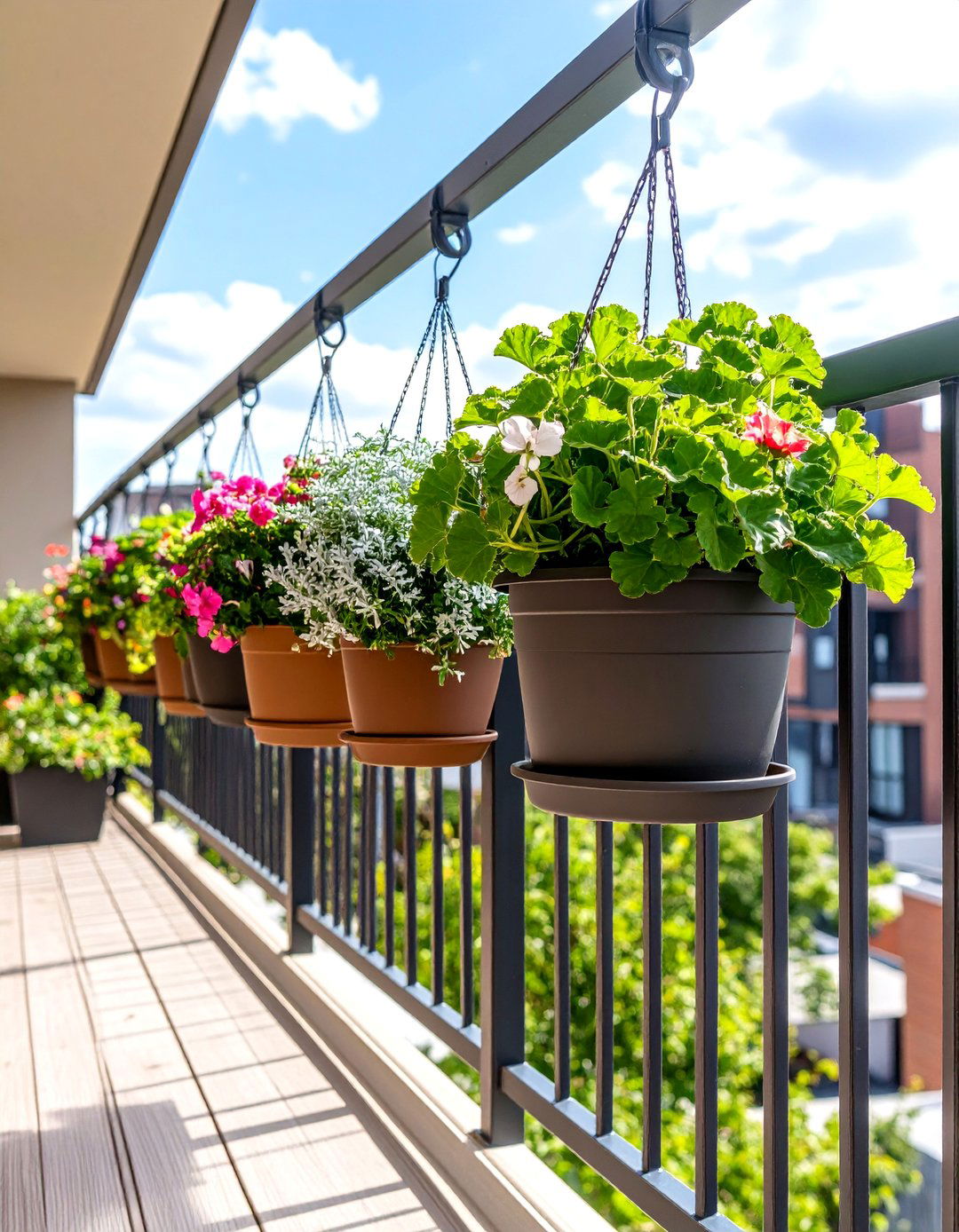

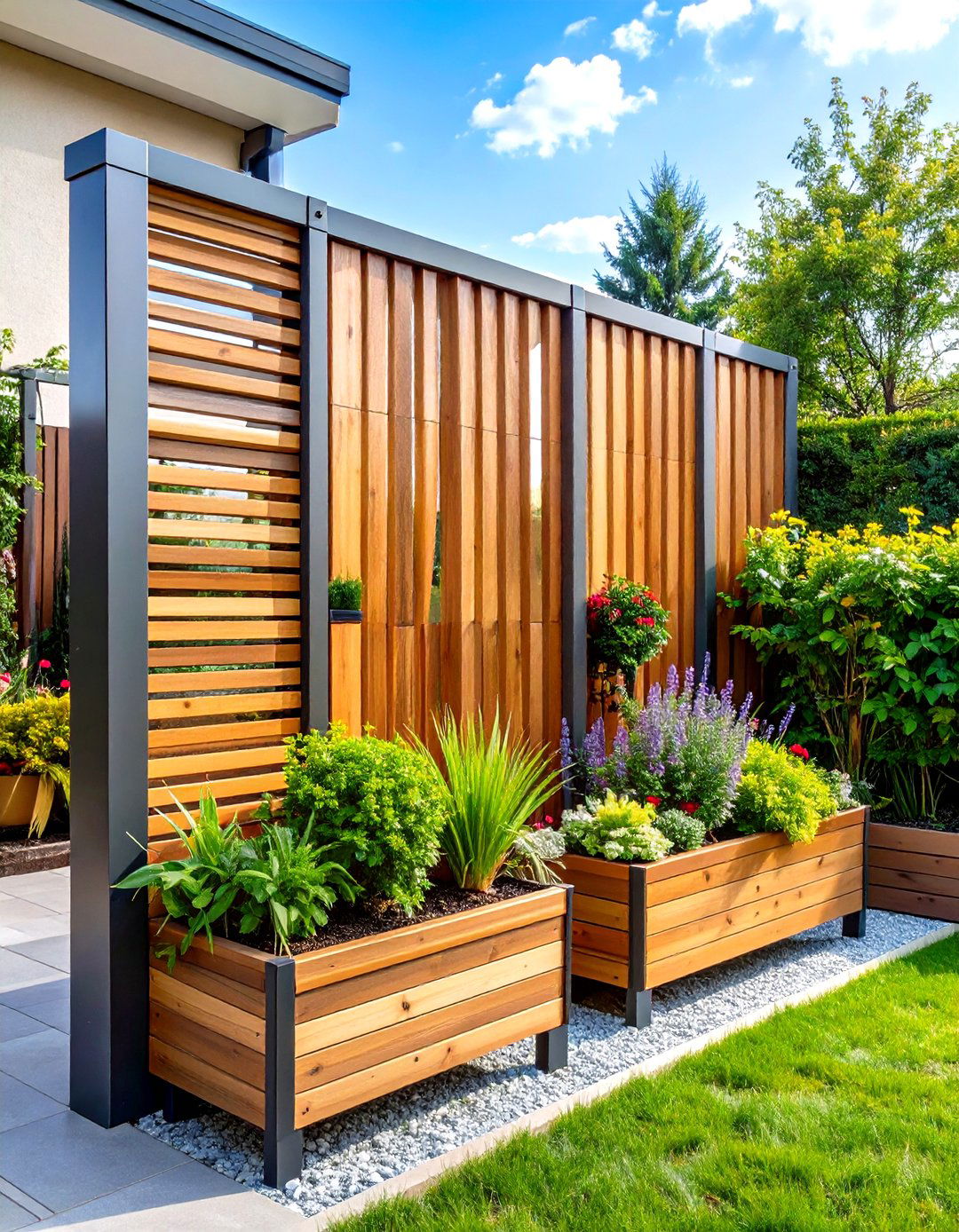
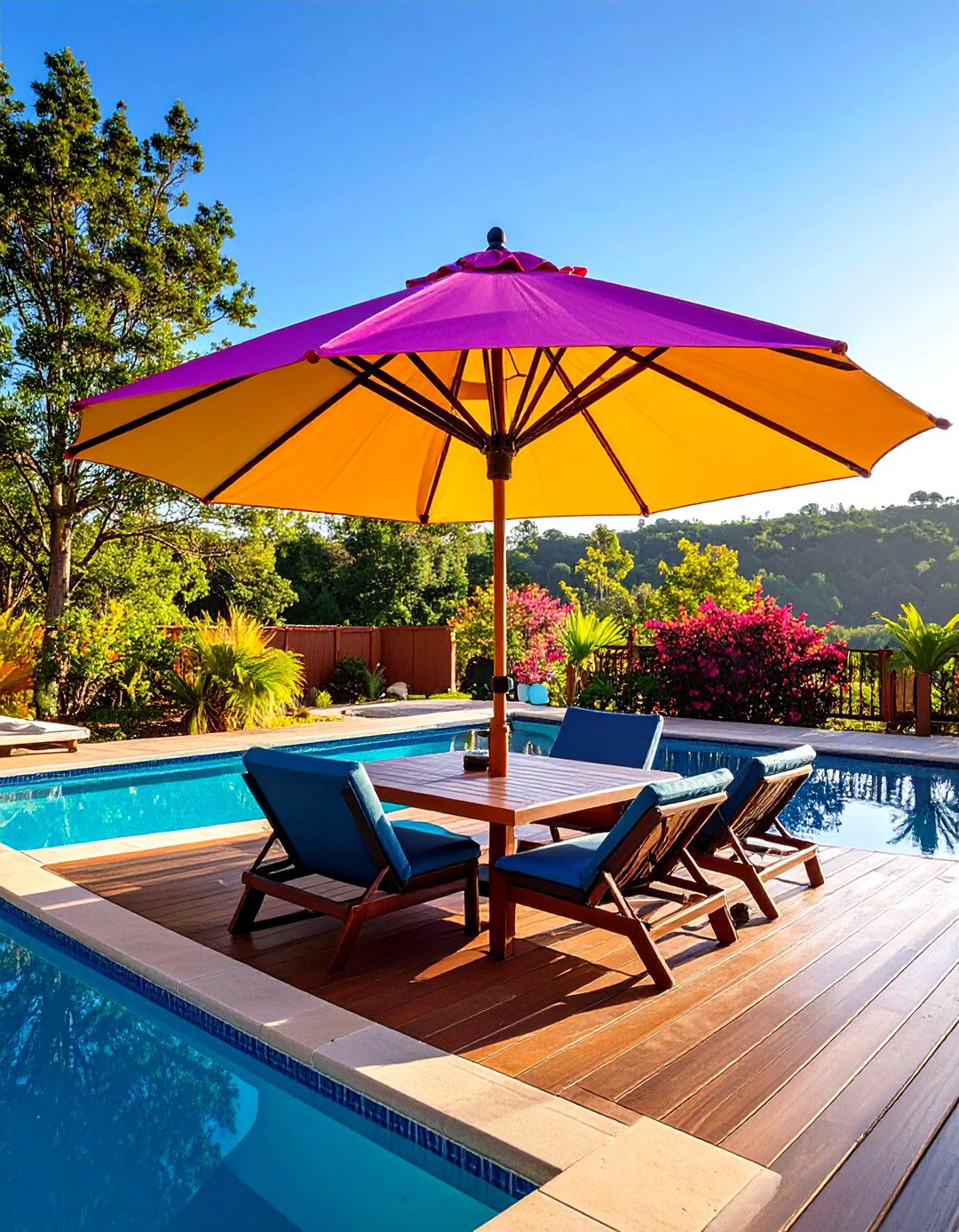
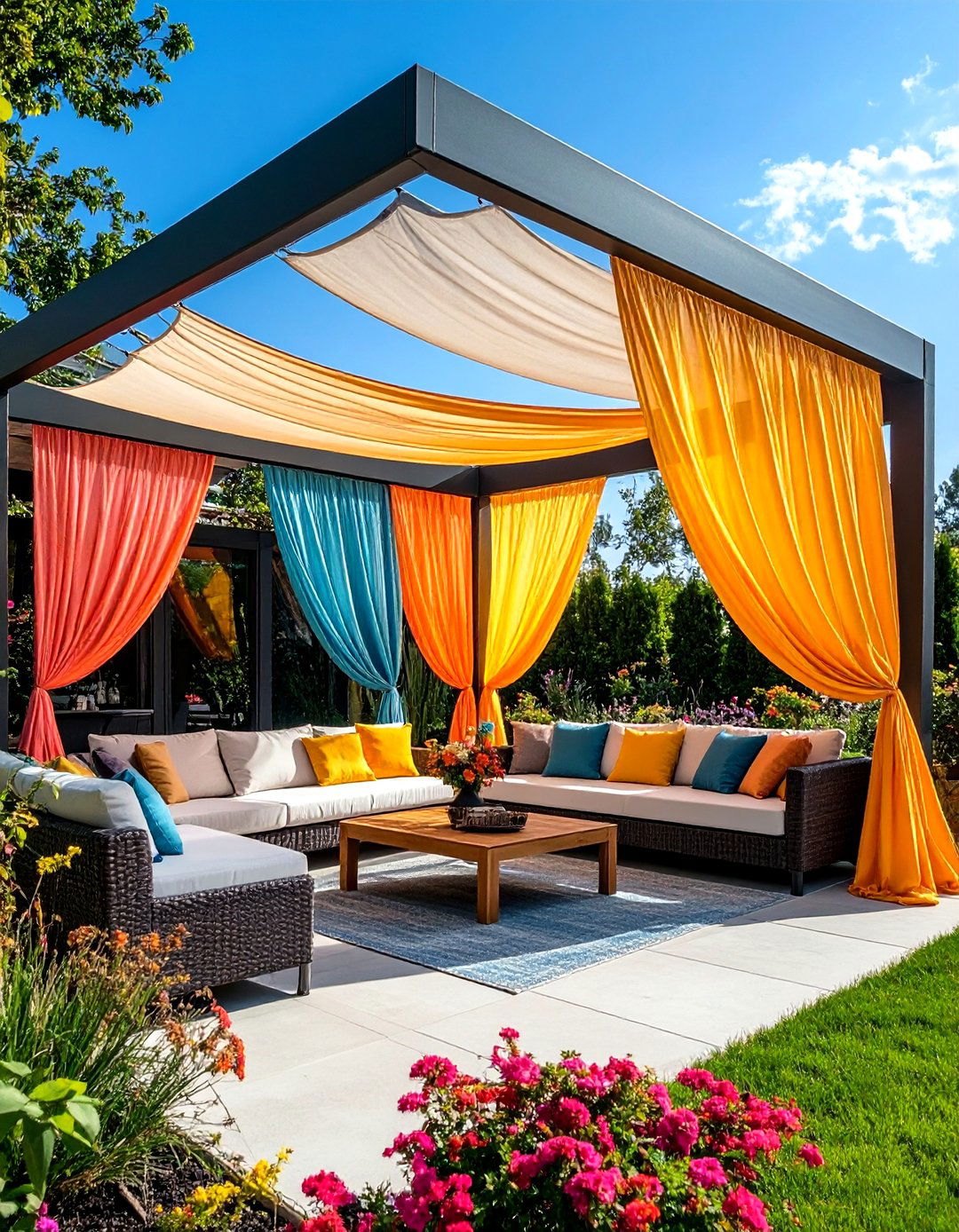
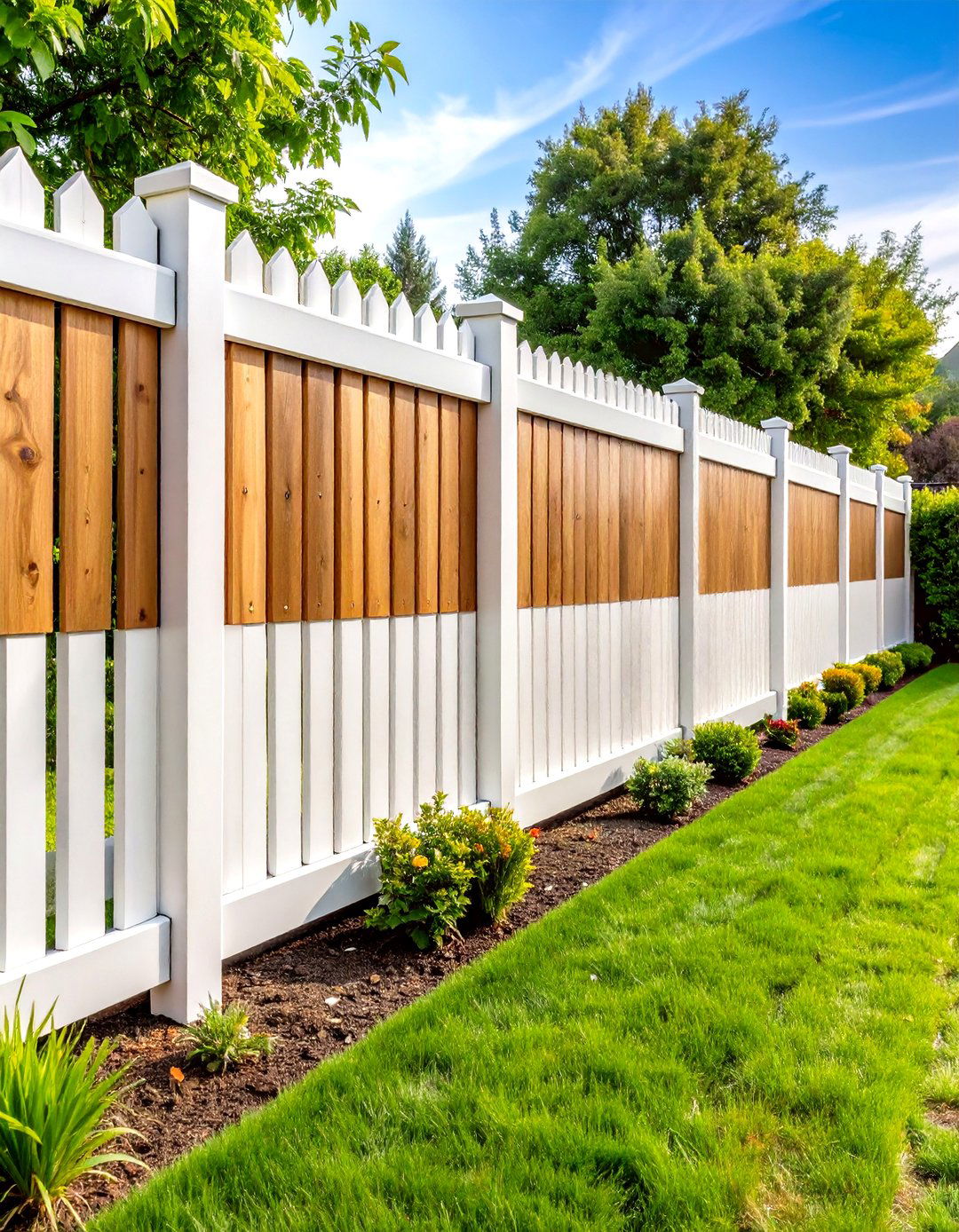
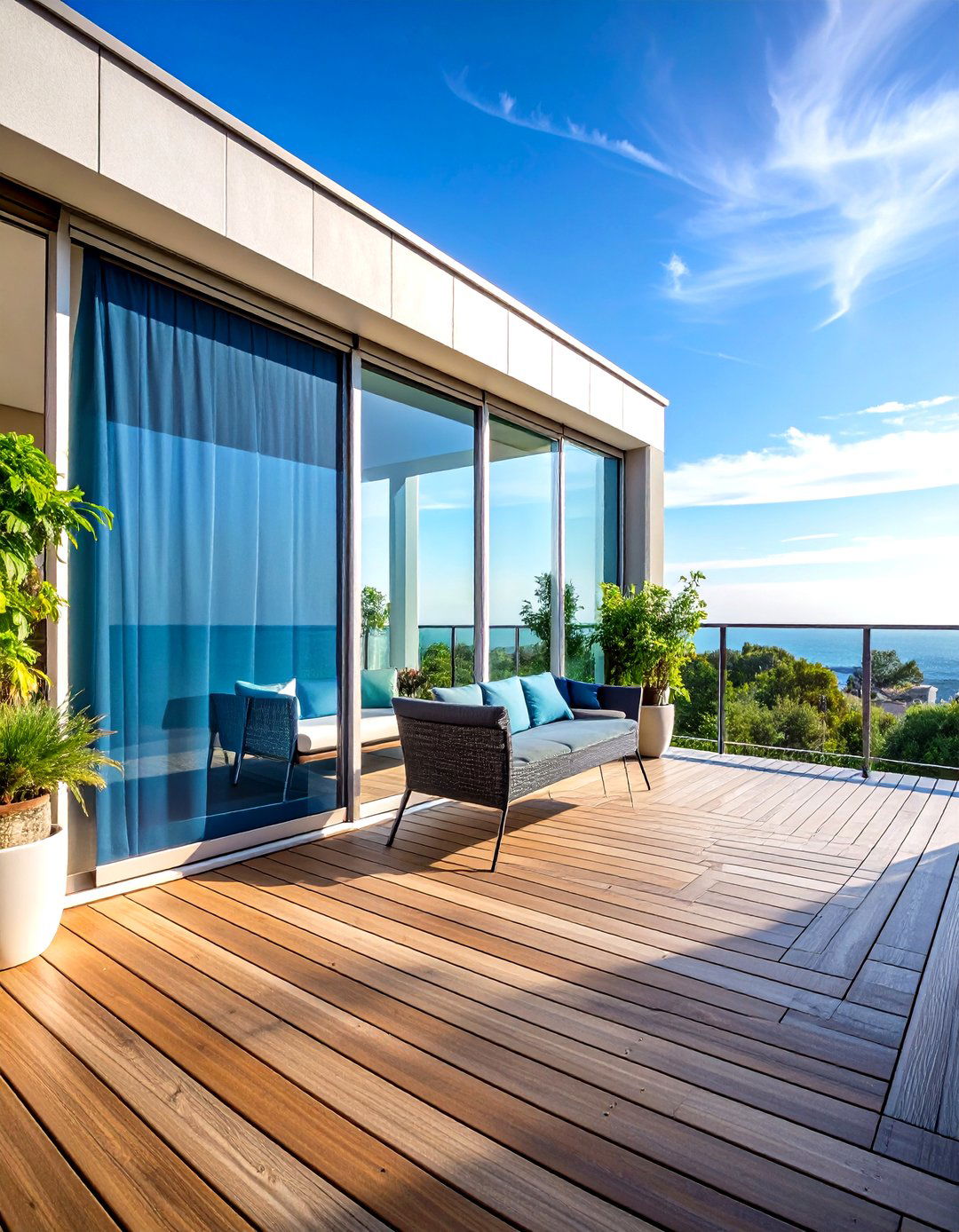
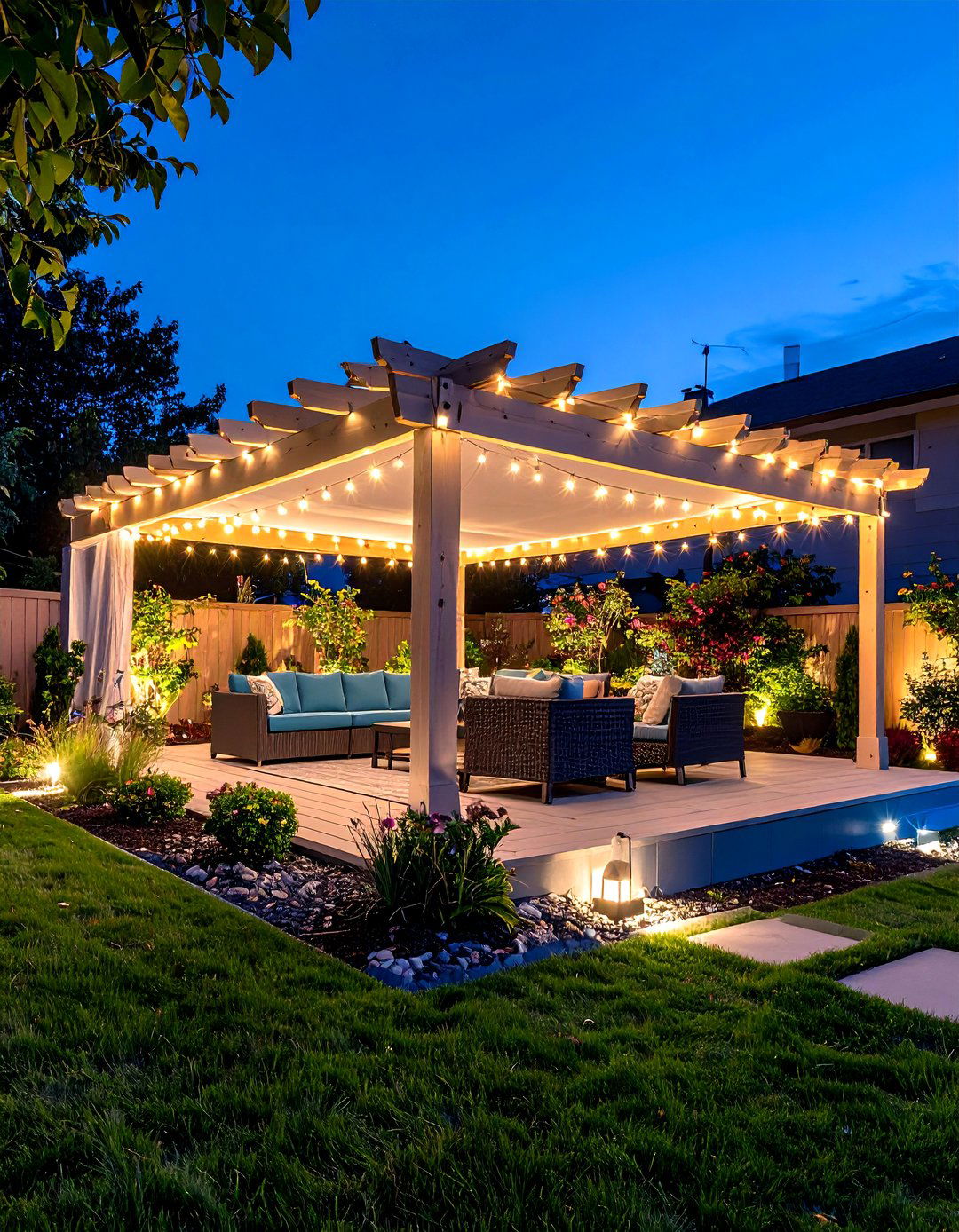
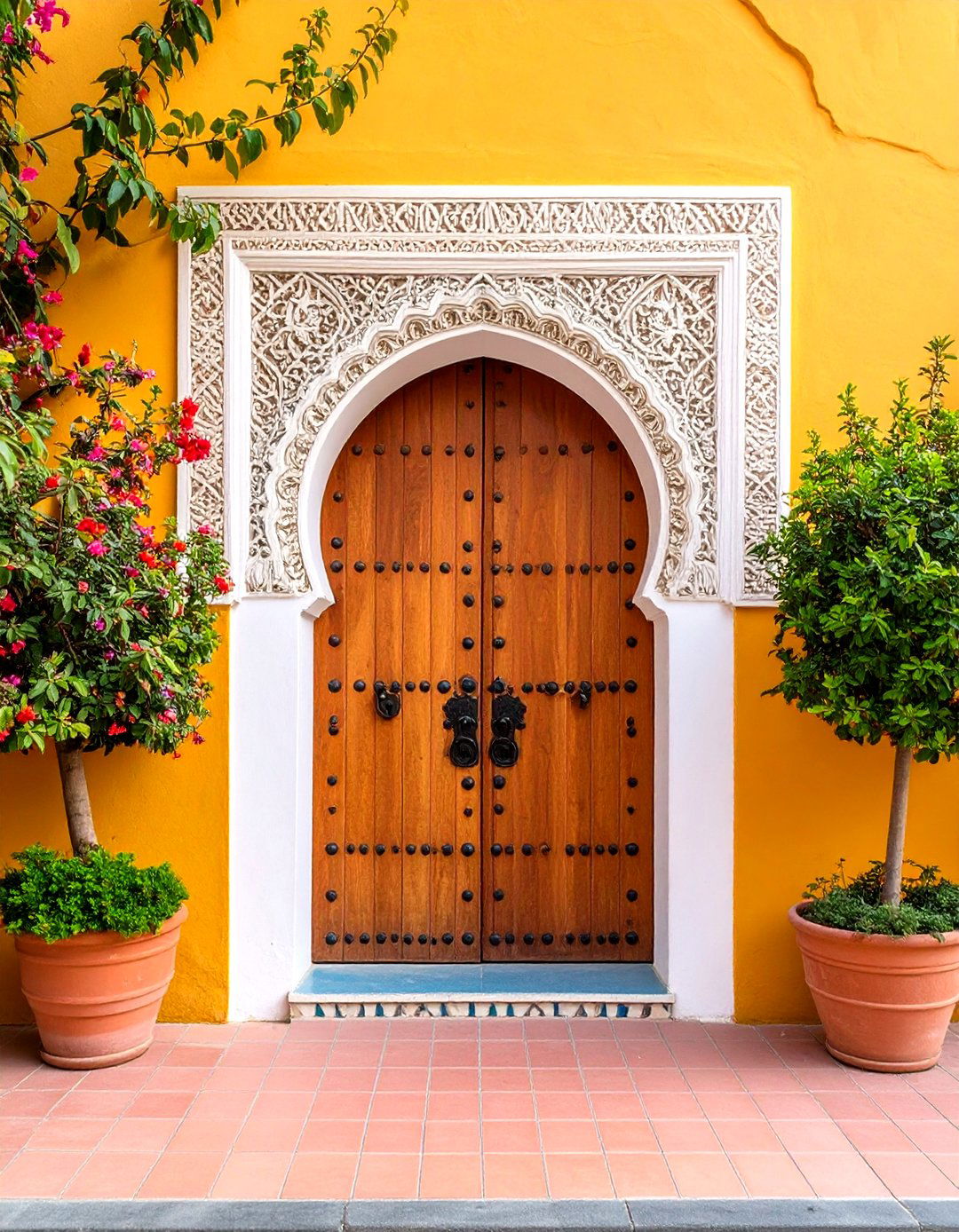
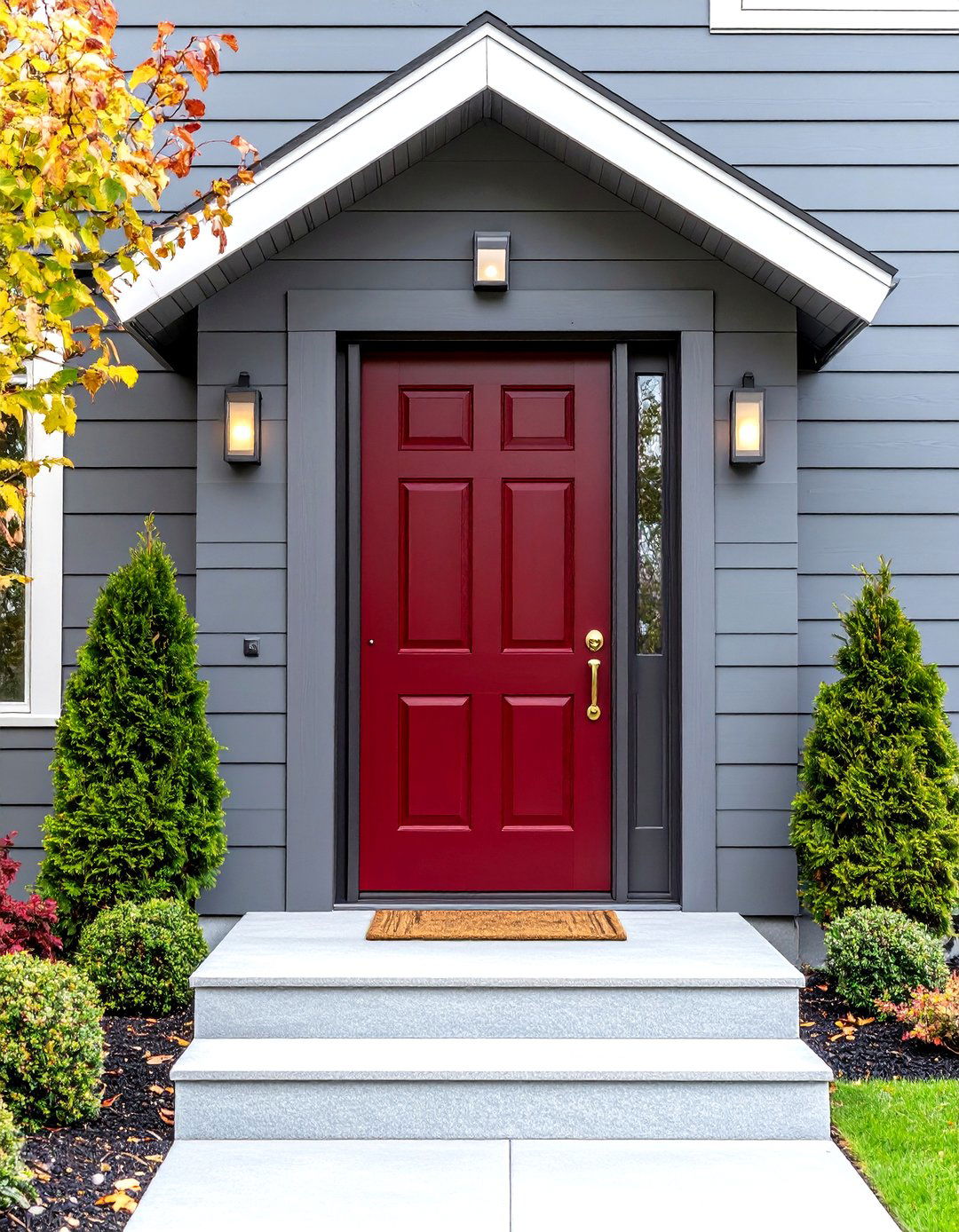
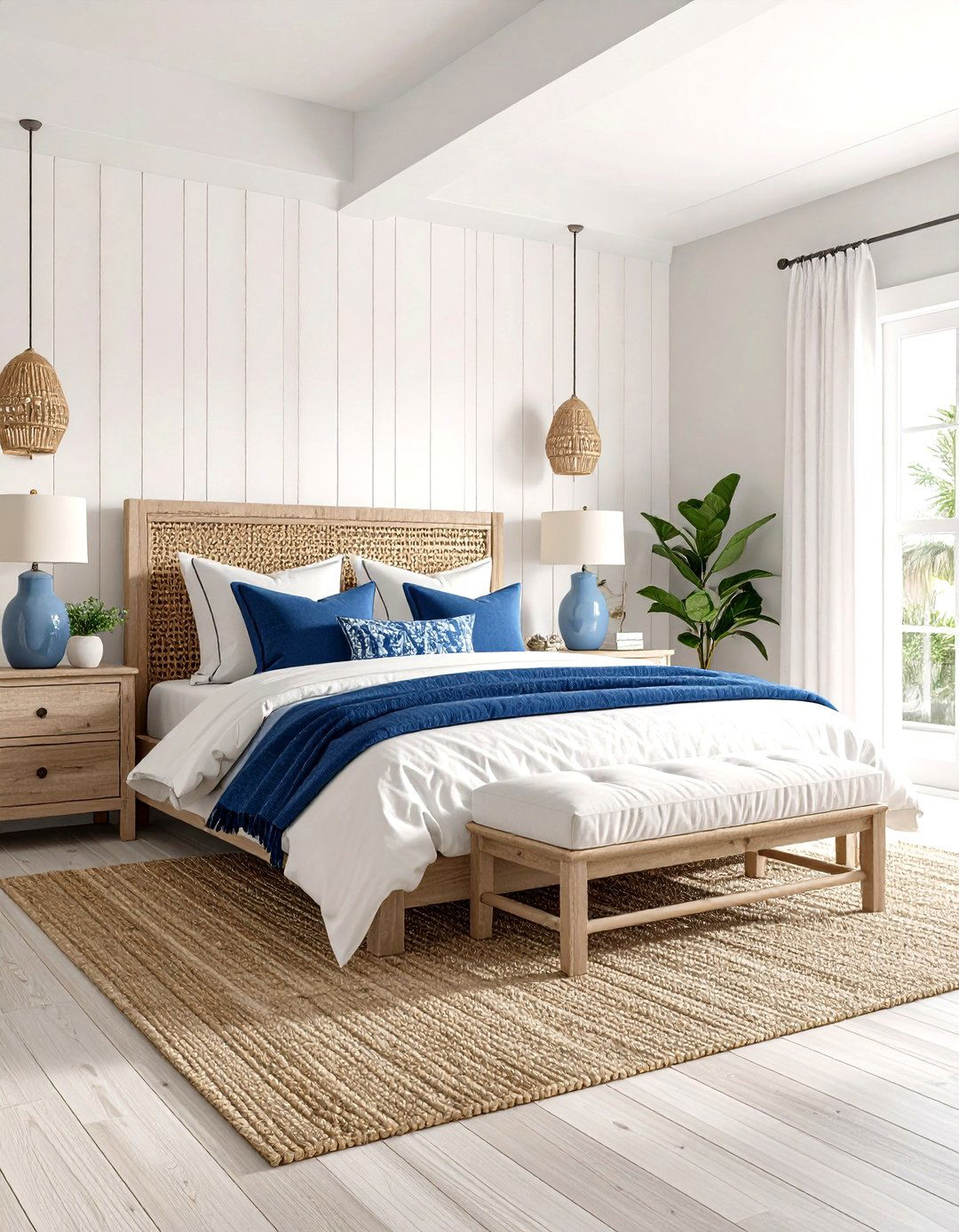
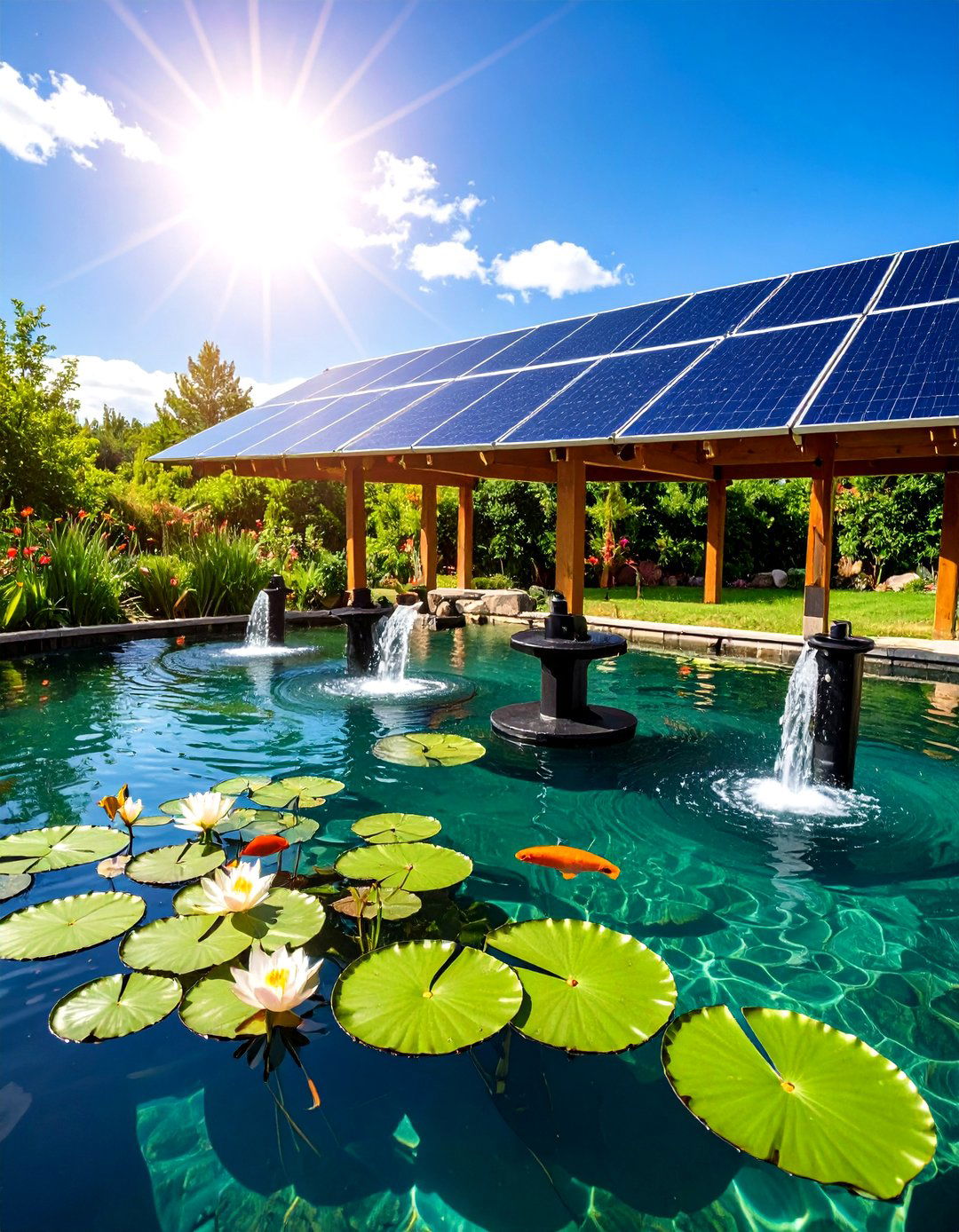
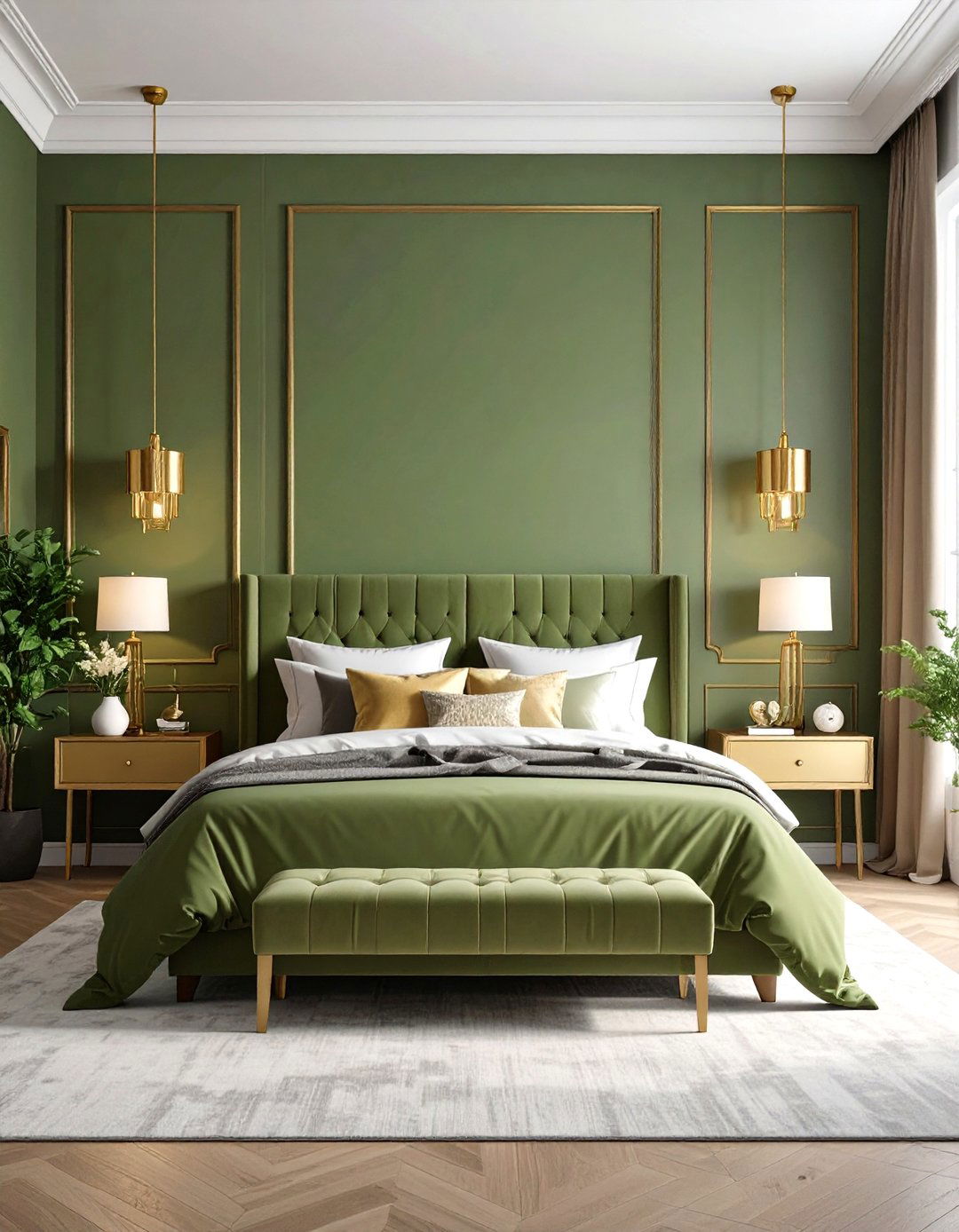
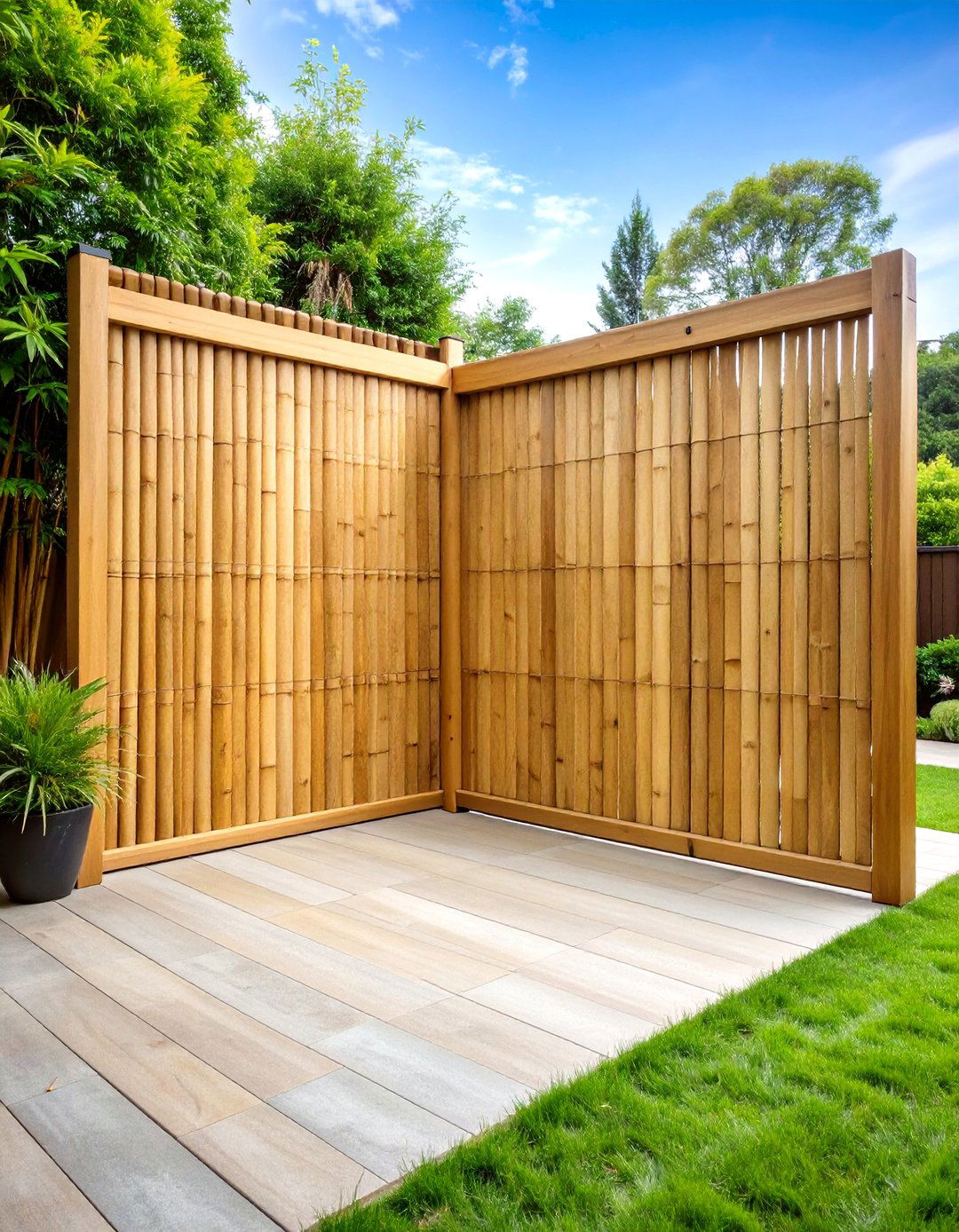
Leave a Reply